

How to Write an Enquiry Email to University | 23 Email Templates
Table of Contents
How to Write an Enquiry Email to University : 25 Email Templates
Sending an enquiry email to a university may initially seem like a simple task. Yet, it requires strategic communication to effectively express your queries and leave a professional impression. The aim of this blog is to provide you with a detailed guide on crafting a perfect enquiry email, ensuring you obtain the information you need while demonstrating your commitment and enthusiasm.
How to Write an Enquiry Email to University | Steps
Step 1: Start with a Polite Greeting Addressing the recipient properly sets the tone of your email, showing a level of respect and professionalism. If you are aware of the recipient’s name, use it; otherwise, resort to a more generic greeting such as “Dear Admissions Team.”
Step 2: Introduce Yourself Share your name, current education, or professional status and state the reason for your email. This introduction should be brief and concise.
Step 3: Specify your Enquiry Delineate clearly what you want to know, ask specific questions. Make your enquiries easy to understand and answer.
Step 4: Show your Interest Explain why you’re specifically interested in this university and how getting this information will help you. This shows your motivation and engagement.
Step 5: Close Professionally End your email with a polite closing like ‘Sincerely’ or ‘Regards,’ followed by your full name.
How to Write an Enquiry Email to University | Tips
Now, let’s delve into some deep insights and tips to further enhance your email.
Tip 1: Research Beforehand Before sending your enquiry, thoroughly research the university’s website. This will show that you are genuinely interested, and it avoids asking questions about information that’s readily available online.
Tip 2: Keep it Brief but Complete Ensure your email is comprehensive but short. University staff typically handle numerous enquiries, and a concise, direct email is more likely to receive a prompt response.
Tip 3: Use a Professional Tone Remember that you are communicating with an educational institution. The language and tone you use should be formal and respectful.
Tip 4: Follow Up If you don’t receive a response within a week or so, it’s acceptable to send a follow-up email. Be sure to remain patient and understanding; the admissions team is likely dealing with a high volume of enquiries.
We hope these steps and tips give you confidence in drafting your enquiry email to universities, which will be a significant first impression before your application.
How to Write an Enquiry Email to University | 25 Templates
Here are 23 email-ready templates to start with:
Hello there, I’m very interested in your online [degree] program. Could you tell me about the application process, and what specific requirements exist for applicants? Thank you!
Dear [name], I wish to apply for the post-graduate degree course in [field]. As I understand the application process, I am should write an admission letter. Are there any strict guidelines as to how this letter should be written? Many thanks,
Dear Sir/Madam, I am writing to enquire about enrolling at your university. For many years I have been interested in the subject of history and would like to know whether I can apply for a Master’s programme in history at your university. To gather more information on this subject and make an informed decision, could you please send me information on applying for this degree programme? Thank you in advance for your cooperation.
Dear Sir/Madam, I would like to apply to enter the [subject] program at [name of] university this coming year. Would you please tell me what documents I need and how many admission points I will need to gain acceptance into the university? Thank you in advance and I look forward to hearing from you. Yours Respectfully,
Dear [name], I would like to be considered for admission. Please let me know the documents required to apply. Are there any points to consider for admission into your institution? Thank you. Yours sincerely,
Dear Sir/Madam, I am interested in applying for entry to the program at your school, having heard many good things about it. I found this post that tells me you require application documents and an entrance test which will tell you how many points I will need to be admitted. Am I correct?
Hello there, I am currently looking for information regarding admission to your university for next year. What do I need to provide in order to apply?
Hello, I am reaching out to ask for some help with my university application. Could you advise what would be needed to apply? Many thanks,
Dear [name], I intend to apply to your university in the Fall of 2021. If possible, I would like to ask some questions about your program and campus life. What do I need to apply? Can you tell me more about the application process? How many points am I eligible for? What is the minimum GPA required for admission? What are your course requirements? Do you have any scholarships available for international students? Please find my application documents below, and if you could please let me know when I should expect a reply.
Dear [name], I am currently attending a community college and plan to transfer. I’d like to know if you have any information regarding the process of transferring into your program, as well as what the requirements are for that.
Dear [name], I am interested in enrolling in the [name of] degree at your university. How many credits do you require for a Bachelor’s degree? What are the core requirements of your program? Do you accept international students? If so, how do I apply? How much are the tuition and housing? Which classes will be available to me as an online student? Would it be possible to meet with someone on campus before making my decision about where to attend school next year? Thanks.
Hello, I am trying to find out if your university provides a course in [subject]. I would like to take this course, but I will need more information about the curriculum, teaching methods and so on before making a decision. Would it be possible for me to have an interview over Skype to get more details about this program? Your input on this matter is very important to me and I would appreciate it if you could get back to me as soon as possible. Thanks in advance for your help, and looking forward to your reply.
Hello, I would like to know if you offer any courses in [subject]? I am interested in learning more about your program and would be grateful if you could send me some information. Regards,
Hello, I am interested in your postgraduate [subject] course and would like to know if I can apply for this program. I have attached my CV as requested and would also be happy to provide additional information if you require it.
Dear Sir/Madam, I am writing to you to enquire about your postgraduate [subject] course. I would like to know if I can apply. Thanks.
Dear [name], I am considering enrolling in a course on [subject] at your university as part of my study on [topic]. I would like to get information about the curriculum and teaching methods from someone with firsthand experience in your degree programme. I’m wondering if I could do an interview over Skype or telephone to learn more about the course. Thank you for your attention, and I look forward to hearing from you soon.
Dear [name], I would like to schedule a telephone or Skype interview to discuss a course at your university. I am a student currently researching the [subject] and I would like more information. Thank you for your attention, and I look forward to learning more about your course.
Hello! I am applying to your [subject] program and I hope to hear back from you soon about the suite of programs that you offer. I am just checking to see if you offer a specific course and if you could send me more info.
Dear [name], I am very interested in your postgraduate business management course and would like to know if I can apply for this program. Yours faithfully,
Hello, I’m writing to express my interest in your postgraduate business management course. I realize that this course is quite competitive, but I would appreciate it if you could confirm whether or not I meet the application requirements. I’d like to know if you offer any scholarships, bursaries or discounts for postgraduate business management courses and whether I would be eligible for this.
Hi, I’d love to learn more about the postgraduate business analytics program. What are the admission requirements? Is a GRE required? Thanks for your time,
Hi! I’ve been interested in the MBA program you offer. I’d like to learn more about the program requirements, so please let me know if I qualify. I’m wondering if there are any specific dates for the application process. I would appreciate it if you could let me know. Thank you.
Hi, I’m very interested in your marketing program. Can I apply for your online program from my location? I’m interested in the program and want to learn more about it. I’d also like to know if there are any specific requirements for applying, such as GPA or GRE scores. Thank you very much!
Hello there, I’m very interested in your online MBA program. I’d like to learn more about the application process and if there are any specific requirements for applying. I would appreciate it if you could send me a copy of the relevant PDF documents via e-mail. I look forward to hearing from you soon! Thank you for your time and consideration!
More Simplestic Templates:
- An Email to Join A Course: 5 Email Templates
- How To Write An Email to a Professor: 19 Email Ready Templates
- 9 Job Application Email Examples that Hiring Managers Absolutely Love!
- 75+ Professional Email Subject Line Examples
- What should a Cover Letter Include ?

Related Posts

129+ Job Application Emails | Letters

47 Example Emails Asking For a Job Opportunity

7 Templates | Follow up Email After Second Interview

93 Subject Lines For Last working day email

Angry Email | Express Your Anger Professionally

Master the Art of an Internship Application: A Comprehensive Guide
- Have your assignments done by seasoned writers. 24/7
- Contact us:
- +1 (213) 221-0069
- [email protected]

How to Write an Email to a University: Admission or Information
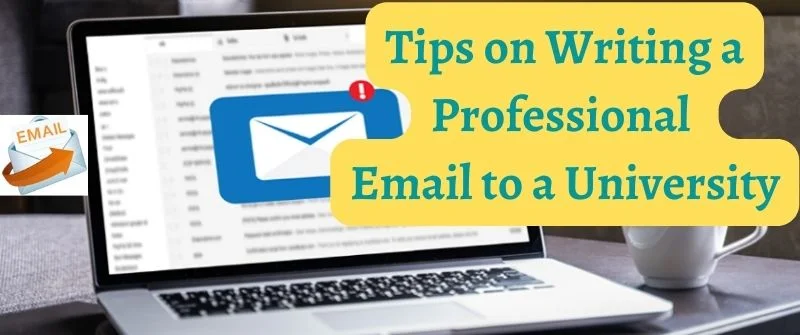
Writing a Professional Email to a University
It is common knowledge to know how to compose an email correctly. However, not all of these skills are taught in school. Hence, writing professional emails can be intimidating for new graduate students and early-career researchers, especially if English isn’t their first language.
Most people are accustomed to sending fast, informal texts to their close friends, often lacking any common framework and are sometimes riddled with slang and acronyms. Knowing how to write a professional email is vital when writing to a professor , researcher, administrator, or business communication.

Why is it so crucial to know how to compose an email properly? If you want to attend university, you must speak successfully in any professional context. Professionalism will assist you in achieving your goals.
You are significantly more likely to succeed if the tone of your communication is acceptable and the substance is appropriate. It applies whether you are applying for admission, requesting course details, or asking for a position or financial aid.
How to Write an Email to a University
Aim at the clarity of your email for any professional correspondence. You will most likely be writing to someone who has a limited amount of time or speaks English in a unique way (i.e., the United Kingdom English/American English/Australian English) or isn’t a native English speaker.

Different professional and cultural backgrounds also play a role, but we will stick to the basics for the time being.
The general structure of the professional email is:
- Salutation/Greeting
- Subject / Reason
- Statement / Request /Answer
- Summary, if necessary
This is a general outline; the exact structure is determined by the context and purpose of the email.
What to consider when writing Professional emails
Writing an email is crucial for presenting oneself and making a solid first impression. When writing professional emails, there are two essential things to consider:
1. Formal Tone
Using a formal tone will improve the professional communication of your emails by communicating your respect for the email recipient’s position.
This includes remembering to say Please, Thank You, Sorry, Apologies, If possible, and at your convenience, when appropriate.
Depending on the situation, especially if you have never met the person, you should use their title and last names, such as Ms. Abc, Mr. Bac, Dr. Abc, or Prof. Abc. Consider using the more informal greeting once you have been advised that it is okay to use the recipient’s first name or sign their first name to a response.
2. Concise writing
Many of the people you are writing are professionals and are likely to be preoccupied with administrative duties, teaching, or research. It is essential to be succinct and to the point to show your appreciation for their time.
In business emails, avoid sending emails that are full of useless material. Your professional emails should also be well-structured, with an introductory and closing paragraph separating the message’s body.
Instead of using a casual greeting such as Hi, you should start your emails with Dear or Hello. Some polite closing remarks include Sincerely, Thank you, Best wishes, and Best regards. Keep your message brief; if possible, keep it to a few sentences.
Keep your name out of the greeting and make sure the subject line is concise.
Guidelines for composing professional emails include:
1) create a specific subject line.
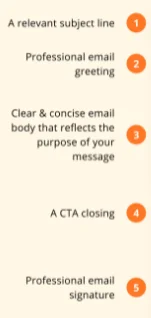
A good subject line informs your receiver about the content of your email. Make yours brief and to the point. Include the class number and section in the subject line if your email is about a class.
2) Start with an appropriate Salutation
Begin with a greeting such as “Dear” or “Hello”
These formal greetings should be used when sending a professional message to your instructors and administrators.
3) Address the recipient correctly
- If you write to a non-faculty administrator, address them as “Mr. Last name” or “Ms. Last name.” If you want to be exact, you may check their profile to see if they have a Ph.D. or DA.
- If you are writing to a professor or instructor, use the title “Professor Last name.”
- You may address your instructor or professor as Dr. Last name” if they have a Ph.D. or DA, but “Professor” is also acceptable.
- Avoid using “Professor First name,” “Dr. First name,” or “Mr. First name” when addressing administrators or faculty.
4) Introduce yourself and state your reason for writing
If you haven’t met your recipient or are concerned that they may not remember you, introduce yourself. Give some context for why you are sending the email. This is the section where you make a request, make a statement, or respond.
Many people use this space to explain why they are making a request and specify how important or urgent it is. For example, ‘I am requesting a reference letter since I am applying for a master’s degree in Economics at XYZ University, and applications are due on March 1st,’. This information can be presented in the rationale part of the email earlier on.
If you are answering, it is unlikely that your email will be long enough to include each of these components. If appropriate, the response follows the email’s rationale or clarification.
This section is crucial because it allows you to clarify what you thought you were asked and allows the receiver to understand why you’re responding the way you are. This eliminates the possibility of miscommunication, which occurs much too frequently.
In a nutshell, make sure you are courteous, direct, and clear about what you are writing.
This section allows you to provide extra clarification, but the email is a short response; you can skip it. You can summarize your email and what you think the next step will be in this part.
For instance, ‘I have attached my transcripts to help you with the admission process. If you have any difficulties accessing them, please let me know,
6) Close the email
This is the last section, but it is also the most significant.
It’s your last chance to be kind and finish your email in the best possible way, effectively the “icing on the cake.” It is crucial to close on a positive note, such as “regards, thank you for your time, or I eagerly await your response.” These aren’t overly formal and are helpful on practically any occasion during your time at university.

Keep this section short and treat it as if you were speaking to the recipient; if it isn’t appropriate in person, it won’t be relevant in an email. Lastly, include a signature block or a consistent way for the recipient to see your name at the bottom of the email.
If you want to assist the recipient in helping you or contacting you, include your student number and other ways they may contact you.
Reasons to Contact a University
There are many reasons why you may need to send an email to the university, including:
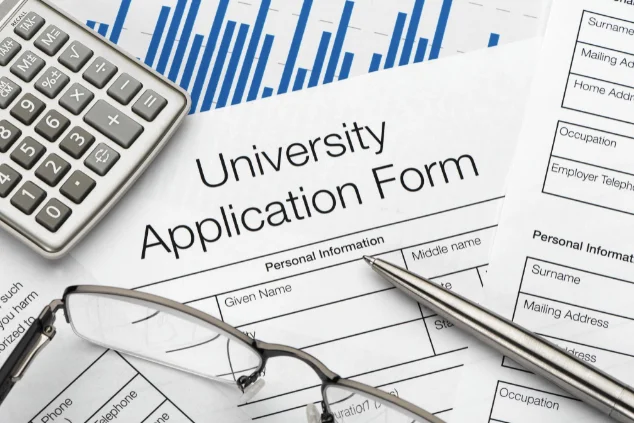
- Contacting your professors
- Asking for information or admission
- Name or other detail correction at the admission office
- Applying for a position, financial assistance, or scholarship
- Requesting for course information from a university department
Dos and Don’ts of Emailing Your University
Ensure your email:
- It is formal and concise
- It has an informative subject line
- Closes on a positive note
If you are seeking a research opening:
- Read the professor’s website
- Explain why research is critical to your objectives.
- Indicate your interest in that particular study group.
- Request a meeting or inform them that you will be arriving during office hours.
If you’re applying for a position, make sure you meet the requisite qualifications and demonstrate your experience.
- Sending messages with typos
- Using salutations that are too informal
- Sending emails that are full of useless material
- Using slang, abbreviations, contractions, or emoticons
- Addressing faculty or administrators by their first names

When not handling complex essays and academic writing tasks, Josh is busy advising students on how to pass assignments. In spare time, he loves playing football or walking with his dog around the park.
Related posts

How To Write A 4000 Words Essay
How to Write a 4000-word Essay: Score A Fast in 1 or 2 Days

zoom random questions
Zoom Exam cheating and Prevention: Is it Proctored on Camera
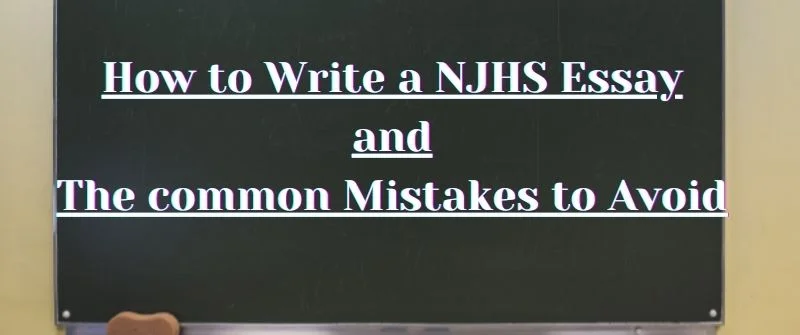
How to Write a NJHS Essay
NJHS Essay: How to Write a Winning Piece from Ideas to end
- Link to facebook
- Link to linkedin
- Link to twitter
- Link to youtube
- Writing Tips
How to Write an Academic Email
4-minute read
- 21st October 2019
When you email a professor or tutor for the first time, you want to make a good impression. But how can you do this? Our top tips for writing an academic email include the following:
- Consider whether you need to send an email. You may be able to find the information in your syllabus, timetable, or other course materials.
- Write a clear subject line setting out what your email is about.
- Let the recipient know who you are and make a specific request.
- Use a clear, concise writing style and appropriate academic language.
- Proofread your email carefully before hitting send.
Check out our guide below for more on how to write an academic email.
1. When to Send an Academic Email
If you say the word “inbox” to an academic, they will shudder in horror. This is because most lecturers and tutors receive dozens of emails every day. Keeping on top of this can take a lot of time and effort.
So, before writing an email, ask yourself: Do I need to send this?
Often, you can find the information you need in other places. If you want to know about a reading assignment, for example, you should check your syllabus, course documentation, or reading list.
This isn’t to say you shouldn’t ask for help. Academic staff are there to assist you. But they can do this more effectively if they have time to spare, so it’s best only to email someone when you can’t find the information elsewhere.
2. Subject Line
Every academic email should have a clear subject line that sets out why you’re emailing. For example, if you need to discuss a paper you’re writing, a vague subject line like “Question” or “Urgent!” may be easy to overlook.
Instead, you could write something like:
Aristotle Paper – Tutorial Request for Wednesday
This is short and simple, but the recipient will immediately understand the topic of your email, what you need, and when you need it.
3. Be Specific About Why You’re Emailing
The text of your email should be as specific as possible. To do this:
- Set out who you are and your relationship to the recipient.
- Explain your situation in no more than a couple sentences. For more complex requests, you’re better off setting up a meeting in person.
- Suggest how the recipient can help you address the problem.
This will ensure the recipient knows who you are and what you need from them. The simpler you make this, the easier it will be for them to respond.
4. Be Clear, Concise and Formal
As well as being specific, you need to use an appropriate writing style. This should be clear, concise, and formal . Be sure to:
Find this useful?
Subscribe to our newsletter and get writing tips from our editors straight to your inbox.
- Address the recipient using their proper title (e.g., Dear Prof. Smith ).
- Use academic language as appropriate (avoid slang and emojis).
- Be polite in your request; don’t make demands.
- Thank the recipient for their time at the end of the email.
It may be the recipient is happy for you to use a less formal writing style. But it’s best to stick to formal, respectful language until you get to know them.
5. Proofread Carefully
Finally, be absolutely sure you proofread your email before sending it.
This will save you from any embarrassing typos, ensuring your email is easy for the recipient to understand.
Example Academic Email
In closing, here’s an example of an academic email:
Dear Prof. Smith,
I am a first-year student on your Ancient Greek Philosophy module, and I was hoping we could meet to discuss the upcoming Aristotle paper (due on March 3).
I am planning to write about Plato and Aristotle, and I have attended the lectures and completed the required reading, but I have questions I would like to ask before I begin writing. Will you be available to meet this Wednesday?
Early afternoon would be best for me, but I am happy to adapt my schedule if you are not available then. If we cannot meet, do you have any books or research papers about Plato and Aristotle that you can suggest?
Thank you for your time.
Kind regards,
Isaac Kinsella
Share this article:
Post A New Comment
Got content that needs a quick turnaround? Let us polish your work. Explore our editorial business services.
3-minute read
What Is a Content Editor?
Are you interested in learning more about the role of a content editor and the...
The Benefits of Using an Online Proofreading Service
Proofreading is important to ensure your writing is clear and concise for your readers. Whether...
2-minute read
6 Online AI Presentation Maker Tools
Creating presentations can be time-consuming and frustrating. Trying to construct a visually appealing and informative...
What Is Market Research?
No matter your industry, conducting market research helps you keep up to date with shifting...
8 Press Release Distribution Services for Your Business
In a world where you need to stand out, press releases are key to being...
How to Get a Patent
In the United States, the US Patent and Trademarks Office issues patents. In the United...

Make sure your writing is the best it can be with our expert English proofreading and editing.
How to Write a Professional Email to a University
- When writing to a professor, researcher, or administrator, a more polite style of email writing may increase your credibility as a fellow professional
- Keep it short, and avoid informal slang and contractions
- Professionalism in emails is critical whether you're writing to your professor or whether you are a professor who's writing to a journal editor
Updated on January 13, 2015

New graduate students and early-career researchers may be daunted by having to write professional emails, particularly if English is not their native language. Most of us are used to writing quick, informal messages to our good friends, often filled with slang and abbreviations and lacking any regular structure.
However, when writing to a professor, researcher, administrator - or for writing in business communication, it's important to know how to write a professional email. A more polite style of email writing may increase your credibility as a fellow professional. The two main main items for writing professional emails are formal tone and concise writing .
The two main items to consider for writing professional emails
Formal tone.
Using a formal tone will enhance the professional communication of your emails by conveying your respect for the email recipient's position. This includes avoiding contractions and slang and being sure to use polite terms, such as “please,” “thank you,” “sorry,” “apologies,” “if possible,” and “at your convenience,” where needed.
Your professional emails should also be well structured, with an opening and a closing bracketing the body of the message. In particular, you should begin your emails with “Dear” rather than “Hi” or a similar informal greeting. Polite closing remarks may include “Sincerely,” “Thank you,” “Best wishes,” and “Best regards.”
Using titles
Depending on the context, and particularly if you have never met the person before, you should err on the side of using his or her title and last name (such as “Ms. Arc,” “Mr. Arc,” “Dr. Arc,” or “Prof. Arc”) rather than just the first name or the full name. Once you have been told that it is permissible to use the recipient's first name or once the recipient has signed his or her first name to a response should you consider using this more informal greeting.
Concise writing
Many professionals to whom you may be writing are likely busy with teaching, research, and/or administrative work. It is best to be concise and to the point to convey your respect for their time. Refrain from writing emails filled with irrelevant information in professional emails.
Keep it short
If possible, limit your message to only a few sentences:
- Mention who recommended that you write (if applicable).
- Briefly describe your background if the person is not familiar with you.
- Clearly state the purpose of your email and the expected next step (often a request).
- Thank the individual for his or her time.
As a result, the body of an effective professional email could be as brief as 2-5 sentences long.
Keep your name out of the greeting
This includes avoiding the common pitfall of spending time stating your name in the first sentence; your name will be signed at the bottom as an email signature, so this step is unnecessary.
Subject line should be concise
Note that the subject line should also directly reflect the purpose of your email. Limit the subject line to a short phrase that encompasses the important points of your email.
One common situation is a first- or second-year graduate student needing to contact a professor regarding learning about the professor's research and potentially joining his or her research group. This can be a particularly intimidating circumstance, especially if the student is new to research, the researcher is prominent, and/or the student has never met the researcher before. Here is an example of a professional-sounding, concise email that could be written in this case, consistent with the tips provided above:
Subject: Meeting request
Dear Dr. Arc,
Dr. Aje recommended that I contact you. I am a first-year graduate student in immunology with an interest in innate immunity. If possible, I would be interested in learning more about your research and potential rotation opportunities in your research group. Please let me know if you would be available to meet sometime next week.
Final Thoughts
On a first draft, people tend to write like they speak. When you're finished writing your email, always remember to read over it before you hit send. Pay careful attention to errors, and double check that your grammar is correct. Make sure you edit long text to keep your sentences short, and remember to write in short paragraphs.
We hope that today's editing tip has clarified a few ways to maintain professionalism in your emails. These tips are applicable for first-year graduate students, as described above, and for professors writing to journal editors. If you have any questions on this topic, please write to us at [email protected] . AJE wishes you the best!

Michaela Panter, PhD
See our "Privacy Policy"
Office of the University Ombudsperson
- Mission, Approach and Principles
- Shannon Lynn Burton, Ph.D.
- Ryan T. Smith, Ed.D.
- Valerie Geyer, AA
- Former Ombudsmen/Ombudspersons
- Historical Archive of the Ombuds Office
- About the Office Video
- Problem/Concern Form
- University Policies & Guidelines
- Presentations/Trainings
- Assessments
- Policy/Handbook Reviews
- Systemic Feedback
- For Undergraduate Students
- For Graduate/Professional Students
- For Faculty / Staff
- Conflict and Grievance Systems
- Additional Resources
Writing an Effective Letter or Email
Many times, the most effective way to send a message to an instructor, advisor, or university administrator is by writing a letter or an email. This information is intended to help you to write an effective letter or email, also included are some tips on appropriate etiquette when emailing professors, advisors, or other university faculty or staff members.
When to Write a Letter or Email
Most professional communication occurs via email, this includes communication to instructors, advisors, or other faculty or staff members within a University environment. Unless faculty or staff members have specified otherwise, email is likely the best form of initial communication.
If you’ve found, however, that email is not getting someone’s attention, or a more formal method of communication is required, writing a letter may be helpful. A letter is often formatted differently than an email, is printed and either hand delivered or sent in the mail.
Either way, it is helpful to request an in person meeting when sending an email or letter. This allows you to engage in dialogue about your concerns, and can lead to greater understanding.
Email Format:
Although email can be less formal than a letter, it is still helpful to incorporate some formalities into it.
Email Elements :
Subject Line : Include information that will provide context to the reader as to why you are sending the email. Most instructors find it helpful to include the course number in the email, as well as a one or two word description of the reason why you are writing.
Salutation : You should use a formal name or title in a salutation, such as Dr., Mr./Ms./Mrs., or Professor as appropriate.
Body : Keep the body of an email concise and to the point. Remain factual and specific. The first few sentences should outline the issue or request you are planning to make, you can then elaborate throughout the email as appropriate. Use paragraphs to make separate points.
Attachments : Include attachments that may be helpful to the person receiving the email.
CC’s : You may CC additional individuals as appropriate. These individuals should already have some context for the issue, and should be a part of the discussion somehow. It will likely not be helpful to CC the University President on an email about a grade dispute.
Letter Format : Traditionally, a letter contains more formatting than an email.
The elements found in typical business letters are:
- full mailing address of the sender
- date on which letter is written
- address of person to whom letter is addressed
- subject line
- body (the main message)
- complimentary closing
- signature line (be sure to sign your letter)
- enclosure and copy notations
Model Letter:
The model below uses all the elements from the list. The above layout is a matter of personal choice, as is the decision to include a phone number and email address. Note: the text of the model letter is exceptionally brief. Most appeal and request letters require a page or two.
- Samuel Student 123 ABC Street San Diego, CA 92120 [email protected] (619) 555-1234
- February 20, 2018
- Dr. Jane Skool, Professor College of _____________ Michigan State University East Lansing, MI 48824
- Subject: Request for Examination
- Dear Dr. Skool:
- I am writing to request a special examination in Course 101. On March 12, the date of the regularly scheduled exam, I have to appear in court as a witness. I have enclosed a copy of the court summons.
- Thank you for taking the time to consider my request. Please contact me by email or phone if you have any questions.
- Respectfully, Sam Student
- Samuel Student PID
- Encl. Cc: John O. Smith
Content and Tone :
Whether you are writing an email or a formal letter, the content and tone will determine whether the letter really does its job. Review any relevant policy and pay particular attention to what the decision maker needs to know to consider an appeal or request . That is the information which should be included in your letter. Opening Statement
The first sentence or two should state the purpose of the letter clearly.
I am writing to appeal my current disciplinary status, and to apologize for my involvement in the floor crawl which led to my being placed on notice. I realize that what seemed harmless fun to me was actually a danger to my health and the health of others. I sincerely regret my actions that night…
I am writing to request a course overload for 2018-2019…
Include factual detail but avoid dramatizing the situation.
In late October I was diagnosed with tonsillitis. I was sick for over a week, and missed most of my mid-term exams.
NOT - In late October after feeling really sick for a few days I finally dragged myself to Student Health Services…
Be Specific
If an appeal or request depends on particular facts which the decision maker will want to verify, be specific.
I missed a test on January 23, because I flew to Vancouver on January 19 for my grandfather’s funeral and returned on January 26. I enclose the airline receipt and can provide further corroboration if that would be helpful.
NOT - I had to attend a funeral out of town so I missed the test on January 23.
Documentation
Include any documentation required by policy or needed to substantiate your claims. If documentation is being sent by a third party, state that with details.
Dr. Well, my father’s physician, has agreed to write to you about this matter…
Stick to the Point
Don’t clutter your letter with information or requests that have no essential connection to the main message. Do Not Try to Manipulate the Reader
Threatening, cajoling, begging, pleading, flattery and making extravagant promises are manipulative and usually ineffective methods.
If you give me a chance to come back to residence next year, I promise to work really hard, get rich, and donate a million dollars to the University… How to Talk About Feelings
It is tempting to overstate the case when something is important to us. When feelings are a legitimate part of a message own the feeling, and state it as a fact.
When I saw my grade, I was very disappointed. Be Brief
It is more work to write a good short letter than a long one. Busy decision makers appreciate the extra effort. Avoid errors
A letter will make a better impression if it is typed; free of spelling and grammar mistakes; free of slang; and placed in the right sized envelope. BUT it is much more important to meet deadlines and state the purpose clearly than to submit a letter which is completely error-free. Keep Copies
Until a matter is settled, keep copies of all letters sent or received, as well as relevant documents and forms.
*Adapted from The University of Western Ontario Ombuds Office, Frances Bauer, Ombudsperson
** Adapted from San Diego State University Office of the Student Ombudsman
- Call MSU: (517) 355-1855
- Visit: msu.edu
- MSU is an affirmative-action, equal-opportunity employer.
- Notice of Nondiscrimination
- Spartans Will.
- © Michigan State University
Writing & Oral Communication Center
Appointment with writing tutor
Appointment with oral comm consultant
Grammar and Writing Exercises
- Diction and Style
- Fragments and Run-ons
- Introductions
- Paragraphing
- Parallel Structure
- Point of View
- Subject Verb Agreement Module
- Thesis Statements
- Verb Tense Shifting
- Writing a Formal Email
Resources for Writers
- Top Twenty Errors in Undergraduate Writing (Stanford University)
- Grammar Quizzes
Citation Resources
- The Bowman Library Webpage has links to helpful citation resources
- Noodletools allows you to input citation information and will produce the citation format for you
- For help with APA format (most business and psychology classes use this citation style)
- Frequently asked questions for MLA format (most English/humanities classes use this citation style)
How to Write a Formal Email
Tips on how to write a formal email with examples.
In the information age, email has become the dominant form of communication. Being able to write a polished, professional email is now a critical skill both in college and the workplace. Below are some key distinctions between formal and informal writing, as well as some guidelines to follow when composing a formal email to a superior (professor, current or prospective employer, etc.) or someone who does not know you.
Informal vs. Formal
- Written to friends and family
- Accuracy and grammar (spelling and punctuation) are not important
- You can make up your own rules
Example: Hi Anne, I miss you so much! Can’t wait to see you on Friday!! We haven’t hung out in so long! I miss my bestie! Maybe we can go to the movies or dinner or just chill and watch TV and catch up…idc, whichever you want. Love ya, Jules
- Written to a professor, colleague, boss, etc.
- Must always be professional
- Accurate grammar, punctuation, and spelling necessary
Example: Dear Professor Johnson, I was unable to attend class today due to a doctor’s appointment. When you have a moment, could please let me know what I missed and what homework I need to have completed for Friday? Thank you, Julia Smith
Formal email format
Salutation:
The salutation of a formal email is similar to the salutation of a letter. When writing to someone you do not know by name, you put “To Whom it May Concern.” When applying for a job, you would address the person by, “Dear Hiring Manager.” If you do know the recipient’s name, you put “Dear Mr./Ms. Smith.” For a formal salutation, you should not use the recipient’s first name or the informal greetings “Hello” or “Hey.”
Body Paragraphs:
It is important to remember that an email needs to be concise. The first sentence, known as the opening sentence, can be a greeting if the situation allows it.
- I hope all is well with you.
- Thank you for your prompt response.
However, for most formal emails it is best to get straight to the point. Depending on the subject, you should have a maximum of four paragraphs and each paragraph should contain a single point. It is also important to provide questions in order to prompt a response. At the end of your last paragraph you should provide a “thank you” or “call to action” depending on the subject of your email.
- Thank you for your assistance with…
- Thank you for your time and I look forward to hearing back from you.
- Please feel free to call or email me if you have any questions.
- I would appreciate it if this could be taken care of promptly.
Like the salutation, the closing of a formal email can be the same as the closing to a letter. However, unlike the salutation, there are more options for a closing.
- Best regards
The closing is then followed by your full name. It is also beneficial to add your job position (if applicable) and phone number under your name in the 4th paragraph.
Sincerely, Julia Smith Student Body President Menlo College (555) 555-5555
Tips on how to write professional formal email
- For example: don’t, haven’t, I’m, isn’t.
- Do NOT write in all capital letters.
- For more help on this topic please refer to the module Diction & Style: https://www.menlo.edu/uploads/academics/DICTION__STYLE.pdf
- Proofread the email at least twice and get a second opinion if possible.
Formal vs. Informal State whether the sentence would be classified as either formal or informal. If informal, change it to formal.
Example: Hi y’all! _informal; To Whom it May Concern:__
Putting It All Together Find and correct the errors in the following emails:
1. Hello Professor Smith, I’m sorry to tell you but im sick and will not be able to come to class. See ya Wednesday. Jason
2. Dear Sally Blue, I read online that you’re selling business cards. I was wondering how much if i only wanted 500? Is color and a logo extra? Can I see an example before all are shipped or will that cost extra? You seem to have a great business so I hope you can help. Thanks, Jess Higgins
3. Dear Sir/Madam, I am a graduate from menlo college. I got a degree in business and would now like to use it. Your company looks interesting. Can I come in for an interview? I have alot of experience from my schooling and extra cirriculers. I think I can help the company alot. Please respond to my email to let me know. Thanks, Max Oates
“An Introduction to Formal Emails.” Oxford University Press. 2008. Web. 24 September 2013. Beare, Kenneth. “How to Write a Business Email.” About.com. Web. 24 September 2013. “Email Writing.” Oxford University Press. 2009. Web. 24 September 2013. Hale, Ali. “Email Etiquette.” Daily Writing Tips. Web. 24 September 2013. “Writing Formal and Informal Emails.” BBC. 2011. Web. 24 September 2013.
1000 El Camino Real
Atherton, CA 94027-4301
800-55-MENLO
© Menlo College
Join us on Facebook
Follow us on Instagram
Connect with us on LinkedIn
Follow us on Twitter
See us on YouTube
Menlo College is committed to ensuring equal access and opportunity to all members of our campus community. We do not unlawfully discriminate in hiring, personnel practices, compensation, promotion, access to programs and activities, or educational opportunities on the basis of race, color, marital status, age, creed, national origin, sex, religion, family care status, physical or mental disability, medical condition, reproductive health decision-making, ancestry, military or veteran status, sexual orientation, gender identity, gender expression, citizenship status, genetic characteristic or information, or any other bases protected by state or federal laws. Inquiries regarding the College’s equal opportunity policies should be directed to the Human Resources Department via email at [email protected] .
Menlo College

7 Tips: How to write an email to a college admissions office
Emailing a college admissions office is no time for spelling errors or etiquette mistakes - this guide and sample email will keep your college emails professional and on point.
Email is such a fast and efficient way to communicate that it's easy to forget basic etiquette and professionalism. If you're not sure how to write an email to a college admissions office, this guide and sample email will keep you on the right track. WeAdmit's simple tips and suggestions will have you sounding professional and staying in the admissions office's good graces, and our college admissions office sample letter will show you how it's done.
Learning to write a professional email to a college admissions office isn't just a formality. Many colleges are teaching courses in professional behavior , including email and social media, because it's a vital skill when moving into the job market and advancing in your career. Plus, although texting and social media have become major ways of communicating on college campuses, a Bowling Green University study found that email is still the primary way students communicate with their professors. Developing professional email skills now will not only help you get into your perfect-fit school, those skills will serve through college and beyond.
Here are seven tips to keep your emails on point:
1. Keep the format clean
A solid college email should start with a formal greeting, preferably with the recipient’s name and title, and end with a sincere send-off. Keep the font size and color legible while avoiding frequent use of emojis, formatting, or images. If the email is difficult to read, it will not come across as if your student takes the email or its contents seriously.
Additionally, make sure the email’s subject line is clear and direct. “Questions Regarding the Economics Major” is much better than “asking about a few of your majors.”
Finally, make sure your student is sending any college-related emails from an appropriate and direct email address, such as [email protected]. This will help prevent their email from ending up in a spam folder or being disregarded for its lack of seriousness.
2. Make a good impression by demonstrating real interest
Many of the emails you'll send to a college admissions office are about information you need, such as your application, your financial aid, the major you're interested in, and scholarships you want to apply for. That's fine! But remember that the college is looking for people who are going to become part of their community, who participate in all aspects of college life, and who genuinely want to be there.
One of the intangible aspects of college admissions is demonstrated interest . It doesn't show up in an application, but it can give you an edge over other applicants. It simply means, "show the college you're invested in being a student there." You do that with campus visits and meetings with department chairs, but when that isn't possible, a well-written heartfelt email that asks good questions about the school can get the admissions office's attention. Put the focus on the school and how you'll be a strong and active part of its community, rather than always focusing on what the school can provide for you.
3. Don't be too casual
We all have a way of talking with our friends via email and text using abbreviations, emojis, slang terms, and shorthand. When it's time to email a college admissions office (or, later, a professor, a job recruiter, a co-worker, or your boss), leave the slang and abbreviations out. Write your emails in your natural voice, as if you're having an in-person conversation. But don't forget that it's a conversation with someone you should treat with respect. Use complete sentences, and proper capitalization and punctuation. Address the person you're emailing as Mr. or Ms., or, if appropriate, Dr. (if you know they have a PhD, it's a good idea to go with Dr.), and their last name.
Keep your email brief and to the point, and make sure you proofread it before you send it.
4. Don't be too formal
I thought we just said don't be too casual? We did. But a common mistake is to go too far in the other direction and write like you're reciting a speech or giving a sermon. There's no need to use big words or stiff, awkward expressions. That's not how you would talk in person, so don't do it in an email!
Also, never use a form email that you've simply filled in the blanks. The college admissions sample email in this article is just to give you an idea of what your email should look like before you write your own. There are plenty of form emails online, and trust us when we say that college admissions staff can spot them a mile away. Your goal in the admissions process is to stand out from the crowd, and a copy-paste email is never a good look.
5. Be polite and respectful
It might seem obvious, but it needs to be said. Approaching your college admissions journey with humbleness and gratitude will serve you better than being rude or entitled. Even if the college has genuinely made an error (it happens!), be kind and polite. Inevitably, you will miss a deadline , forget to send paperwork, or otherwise misstep, and your gracious behavior will reward you when you need help from the people in charge of accepting you to college.
6. Think before you send
Sometimes the best college admissions email is one you never send at all. If you have a question about the school that's answered on the school's web site or in an FAQ, or even on a student forum somewhere, there's no need to ask an admissions official about it. Don't be afraid to do some research and find the facts about admissions that you need.
If you're further along in the admissions process, you might be following up on an earlier email that hasn't received a reply in a little while. Of course, when you're waiting for your acceptance letter or financial aid package, a single day feels like forever. Still, don't pester admissions every other day. In general it's a good idea to wait a week or two before sending another follow-up email (unless the matter's especially urgent, in which case it might be time to just pick up the phone).
Getting into college can be a stressful time, and you don't always get the answers you want to hear from the admissions office. It's ok to feel upset or hurt when this happens. Just don't send an email when you feel that way. Take a day to cool your emotions so your reply is always polite and respectful, even when you want to scream.
7. Sample college admissions office email
In this sample email, the person sending the email is reaching out for more information on a college's honors program. Note the tone: respectful, but not stiff. It draws connections between the student and the college, demonstrating interest, and includes a personal point (that she wants to try mountain climbing) to help Dr. Alvarez remember her. This student has suffered a setback, but doesn't speak bitterly about it, instead moving forward to other opportunities. She has researched and found that the honors program is run by Janet Alvarez, who has a PhD.
Dear Dr. Alvarez,
My name is Hannah Wilson, and I'll be a freshman at State University this fall. I was disappointed that I didn't win the Masterson Scholarship, but Mr. Klein in the admissions office told me I would still be eligible for the honors program. I noticed that last semester there were honors classes on agriculture in early human history. I'm considering anthropology for my major, and I was wondering if you knew which honors classes will be offered this fall. Is it possible to have honors class credits count toward a major if they're in the appropriate field of study?
I saw from the honors program website that honors students get to participate in extra activities together. I'd love to be part of the honors program, and I can't wait to meet the other honors students. I really want to try mountain climbing - I've never had a chance to do that.
Hannah Wilson
That should give you a good idea of how to approach any emails you send to a college admissions office, or any other email where you need to be your professional best. If you're looking for personalized help with the other parts of your college journey, from essays to test prep and more, try one of WeAdmit's free counseling sessions . A team of WeAdmit college counselors can guide you down the path to your perfect-fit school.
Related Posts .
The impact of restricting affirmative action: predicting the fresh graduate recruiting landscape.
Restricted affirmative action in college admissions may decrease diversity and pose challenges in recruiting diverse talent. Companies must adapt strategies, prioritize equity, and address socioeconomic implications to ensure a diverse and inclusive fresh graduate recruiting landscape.
Unlocking Potential through Essential Questions: 18 Inquiries for Campus Tours and Info Sessions
Unlocking the Secrets of Campus Tours and Info Sessions: Unveiling 18 Essential Questions for Prospective Students and Parents. Don't miss out on this valuable guide to making the most of your college visits. Explore the right questions to ask, gain valuable insights, and empower yourself to make informed decisions about your future undergraduate program.
Expressing Gratitude to Forbes for Recognizing WeAdmit's Commitment to Quality College Counseling
WeAdmit expresses gratitude to Forbes for recognizing our commitment to quality college counseling and accessible guidance. We are honored to empower students and shape a brighter future through education. Thank you, Forbes, for your support.

Need more Information?
Gain all the information you need by getting in touch with our admissions team or booking a free 30-minute counseling session.
Get in touch!
Making Email Contact with a University

If you are considering going to an English speaking university, you’ve probably been practicing your academic writing. Academic writing, the kind of writing you need to do on the TOEFL and other entrance exams, is formal and complex. But for many university applicants, academic writing is not the only writing they need to do.
During the university application process, email writing skills can be as important as academic writing skills. Often, choosing the right university and getting accepted requires the student to email university administrators and teachers.
Emails are generally less formal than academic writing. Sometimes they can be much less formal, with sentence structure and vocabulary this is more like spoken English than written English. This can even be true when you are emailing university staff and professors.
Be careful though. If you are making the first contact, emailing the university before the email you, it’s best not to be too informal. You don’t want to seem disrespectful. It’s also important to seem serious about getting accepted.
If you are starting an email conversation with a university, use the formal features of letter writing , not academic writing. Have a formal greeting. Use complete sentences, but don’t make them as long and complex as academic sentences. Group your sentences into clearly organized paragraphs. At the end of the email, use a formal sign-off word or phrase such as “cordially” or “sincerely.”
To help you understand what to do and what not to do when you make email contact with a university, here are three different versions of the same email. The emails are written to a director of admissions for an American university.

Email Version 1 (too informal):
Just writing to see what your TOEFL requirements are. Couldn’t find the info on your website.
Comments: This email doesn’t even use the names of the recipient or the sender. In the context of an email to a university, this seems not only informal, but a little rude. Using the first names of the recipient and sender would be a little better. However, it’s best to use the title and last name of the recipient and the full name of the sender. The use of slang/conversational words “hey” and “thanx” is also far too informal. Finally, the sentences are fragments. They should be complete sentences with a subject and predicate .
Email Version 2 (too formal)
I hope this day finds you well.
I am writing because I have concerns about the acceptability of my TOEFL score. I have a 25 in Reading, a 24 in Writing, a 20 in Listening, and a 21 in Speaking. I am certainly cautiously optimistic that my scores will be acceptable to the admissions committee at the time that they are making their decisions. However, after navigating the admissions website extensively and carefully analyzing the available information, I feel there is still more I need to know.
While your departmental website offers copious amounts of helpful information, I was unable to locate TOEFL specifications that would indicate whether or not I should retake the exam. It seems possible that you may have no absolute score requirement, and that my TOEFL score will merely be part of holistic assessment of my eligibility. However, it also seems equally plausible that there is a TOEFL requirement, but that your office has not made the requirement available publicly. Conversely, perhaps you have published the scores, but I was simply unable to successfully locate them on your website.
Regardless, it is very important to me to know your exact policy regarding TOEFL and TOEFL scores. Any information you could give me that sheds light on this important issue would be greatly appreciated.
Yours sincerely,
Comments: If you didn’t read all the way through this email, don’t feel bad. A university administrator probably wouldn’t have the time or patience to read through the whole email either! University officials and teachers are busy people, so the flowery, wordy language of regular academic writing is not appropriate when emailing them.
Email Version 3 (just right)
I am writing to ask about the admissions office’s TOEFL score requirements. I looked on the admissions website and couldn’t find them. Could you please let me know what the score requirements are? If the requirements are somewhere on your website, a link would be much appreciated too. Thanks in advance for any help you can give.
Comments: This email is perfect. It uses the last name of the recipient with a formal title (Ms.). It also uses the full name of the sender of the email. That way, Ms. Johnson can know exactly which applicant she is speaking to. The body of the email itself gives Ms. Johnson the information she needs help the applicant. It also contains some polite and thankful language, without becoming too wordy or running too long.
In the second email above, the tone of the email would be acceptable in academic writing. But the third email, with its less formal tone, demonstrates a better writing style for university contact. As you practice your academic writing for the TOEFL, be ready to switch styles if you need to email any of the universities you’re applying to.

David is a Test Prep Expert for Magoosh TOEFL and IELTS. Additionally, he’s helped students with TOEIC, PET, FCE, BULATS, Eiken, SAT, ACT, GRE, and GMAT. David has a BS from the University of Wisconsin-Eau Claire and an MA from the University of Wisconsin-River Falls. His work at Magoosh has been cited in many scholarly articles , his Master’s Thesis is featured on the Reading with Pictures website, and he’s presented at the WITESOL (link to PDF) and NAFSA conferences. David has taught K-12 ESL in South Korea as well as undergraduate English and MBA-level business English at American universities. He has also trained English teachers in America, Italy, and Peru. Come join David and the Magoosh team on Youtube , Facebook , and Instagram , or connect with him via LinkedIn !
View all posts
More from Magoosh

27 responses to “Making Email Contact with a University”
Thank you so much
Thank you so much, David. This post is very helpful 🙂
Thank you for your kind words, Nia. 🙂
what if i do not know the name of receiver
That’s a good point, Sarthak. Sometimes you won’t know the name of the person who will read the email. The email address itself might just be something like “admissions@_____.edu.” In that case, your opening greeting can be nonspecific. You have a variety of options for no-name email greetings, such as “Dear Sir or Madam,” “Dear University Admissions,” “To Whom it may Concern,” and so on. Hope this helps, Sarthak, but let me know if you have any other questions. 🙂
Yeah that’s exactly what I needed to know, thanks a lot
Thank you so much David
How would you start the email if you don’t know the name of the person? I’m want to contact the financial aid department and don’t know the specific name of the person who will receive the email.
This is a great question. Sometimes you won’t know the name of the person who will read the email. In that case, your opening greeting can be nonspecific. You have a variety of options for no-name email greetings, such as “Dear Sir or Madam,” “To Whom it may Concern,” and so on. 🙂
Hello. Thank you for this article! How do I go about having multiple questions to ask? I would start a new paragraph for each question but what I am struggling with is how to formulate this. After an introductory sentence like “I am writing to ask about [general topic].” would “First,… Secondly,…” be appropriate or are there better options? Thanks in advance.
I would recommend having a short introduction and then ask each question in a separate paragraph. I wouldn’t worry too much about formatting beyond making sure that your spelling, punctuation and grammar is correct. Keep in mind that the admissions counselors are very busy, so often a polite, succinct and direct approach will yield the best results!
??What about the subject
A straightforward and polite subject is usually best. Something like “Inquiry about TOEFL scores” or “Question from prospective student about admissions requirements.” Make sure that your subject line provides some information about who you are and what you are asking!
Thank you so much for your insight David! I have a question, I’m emailing my SAT scores to a university, what would be appropriate for the subject line? Thank you in advance!
Great question, Felicia! Your subject line will depend on why you’re emailing our SAT scores to the university. Usually when someone is emailing test scores to the university, you’re doing it because you got a request for your scores from a specific office or faculty member. In that case, it’s good to email to the attention of the department or person who asked for your scores. You’ll also want to mention your name in the subject line. Good subjects for such an email might look like:
“ATTN: Bard College Admissions Office (SAT scores, Felicia Edet)”
“ATTN: Ms. Cyndi Smith (SAT scores, Felicia Edet)”
If you aren’t emailing in response to a request for the scores, it can still be good to mention your name, with a simpler subject such as “SAT scores (attached), Felica Edet)” Schools receive emailed scores form many students, so adding in your name helps make it clear which student you are. This in turn makes it easier for the school to find your SAT scores among all the other ones they receive.
can u send me an another sample of mail regarding “writing mail to university director regarding lack of gym in college “….thank u in advance.
That’s a really specific situation, Avanish. And it sounds like a situation you might know better than I do. So I’ll tell you what. If you reply to this comment with your own draft of an email about a lack of a gym at a college, I’ll be more than happy to give you feedback on how to improve the email. 🙂
Hello, Would you please proofread my email? Thanks in advance.
Subject: Inquiry about the last test dates of TOEFL for Early Decision Application.
Dear University Admissions,
I am writing to know about the last test dates of TOEFL which will be accepted for Early Decision Application in your university by November 1, 2019. I looked on the admission website but I couldn’t find it there. There were other last test dates (SAT and SAT subject tests) but no specific last test dates of TOEFL for Early Decision Application. If the last test dates of TOEFL for Early decision is somewhere on your website, a link would be highly appreciated. Thanks in advance for any help you can give.
Hi Tahsina,
Normally Magoosh doesn’t take requests for writing feedback, since we’re a pretty small team, and we couldn’t take every student request. In your case though, I’ll make an exception, because proofreading this letter is easy– it’s already properly formed throughout. Nice work!
I wanted to know how to mail an organization for own information of interest, n here in this article, I found 3 ways. Such a helpful article. Thank u so much.
Thank you so much David, that was really helpful!🙂
Actually i even dont know how to get the university e-mail to contact them, can u plz tell me how to find e-mail of a university to contact.
You’ll want to go to the website of the university you are applying to, find the specific college or program, and look in those pages for contact information. You may also be able to google something like “college name + admissions contact” to find the right address. Good luck!
Actually, the University where I’m going to apply, asked the applicants to send their test scores electronically. I already complete the procedure. However, it will take at least 10 working days. The fact is, it will pass the application deadline. So, I want to send the scanned copy of my test score. In that case, what should be the “Subject line” & how can I write about the fact? Please if you can give me any idea?
I’d suggest writing directly to an admission director at your university and explaining the situation in full. You might want to title your email “TOEFL Test Scores” Or “YourLastName Application”. But, it will be up to their discretion whether or not they will accept the scores via email/scan, because most universities do have a strict deadline that even your test scores need to adhere to.
Best of luck to you! 🙂
Hey thanks for your help
and i just need to write about considering my application and course selection.so can you help me how can i write
Hi Zerihun,
If you are applying to a graduate program, I’d recommend that you check out all of the helpful information on our new Graduate Admissions Blog . If you are applying to college from high school, then check out the helpful information on our high school blog here .
Best of luck to you! 😀
Leave a Reply Cancel reply
Your email address will not be published. Required fields are marked *
Have a language expert improve your writing
Run a free plagiarism check in 10 minutes, generate accurate citations for free.
- Knowledge Base
- Effective communication
- How to Start an Email | 10 Greetings & Opening Lines
How to Start an Email | 10 Greetings & Opening Lines
Published on December 22, 2022 by Jack Caulfield . Revised on June 26, 2023.
Sending good emails is an important skill in academic and professional contexts. It’s essential to start your emails on the right foot with an appropriate greeting and an engaging opening line .
Below, we explore how to start an email, providing five professional greetings and five strong opening lines that you can use in your correspondence. We also explain the contexts where each one would be an appropriate choice.
Fix common mistakes for free
Fix mistakes for free
Table of contents
5 strong greetings (salutations), 5 good opening lines, how not to start an email, other interesting language articles, frequently asked questions.
For your email’s greeting (also called a salutation ), you don’t need to do anything fancy. Keep it simple and choose one of the tried and tested greetings below based on the context and the level of formality you’re aiming for.
1. Dear [full name],
Greeting the recipient by their full name is best when you haven’t previously interacted with them.
Use “Dear,” not the less formal greetings “Hello” and “Hi,” alongside someone’s full name to avoid creating a jarring combination of different levels of formality. Also avoid using this option if you’ve interacted with the person previously, as it comes across as overly stiff.
2. Dear [title and last name],
Using an abbreviated title (such as “Ms.” or “Dr.”) followed by the person’s last name is another way of greeting someone formally. This can be a good option to show respect to a superior in some context—for example, when writing to your professor at university. It’s also a formal way of addressing someone you’ve never interacted with before.
Use of titles like this is often considered somewhat old-fashioned, though. As such, it’s best saved for contexts in which you haven’t interacted with the person before or want to show a special level of respect.
3. Hi [first name],
People sometimes assume that all emails sent in a professional context need to be formal in tone, but this isn’t the case in most workplaces today. If you’ve had some previous interaction with a person, it’s normally fine to just greet them by their first name, preceded by “Hi,” “Hello,” or the slightly more formal “Dear.”
This kind of informal greeting is not appropriate in all contexts. If you’re applying for a job or contacting someone you don’t know, it’s best to go for something more formal. This kind of greeting is sometimes used in marketing emails, but some might find it presumptuous —always consider your target audience.
4. Dear [team, department, or job title],
When your email is addressed to someone whose name you don’t know, to a group of people, or to an organization or department, using alternative names is an appropriate choice: the person’s job title, the name of the team, or (in a more familiar context) something more generic like “team” or “everyone.”
Do this only when you have a good reason to. If you’re writing to an individual whose name you know or can reasonably find out, it’s better to use their name than something generic like a job title.
Sometimes a simple “Hello” or “Hi” is all you need. It’s a good, straightforward choice for a quick message to someone you communicate with frequently and don’t need to show any particular formality with. It lets you get straight to the point.
Though people sometimes choose this greeting when they’re not sure whom they’re writing to, it’s not a good choice in that context, as it can come across as overly blunt. In that situation, try using a job title or department name instead, as suggested above.
Check for common mistakes
Use the best grammar checker available to check for common mistakes in your text.
The opening line of the email itself is where you can catch the reader’s attention, build a rapport, or quickly communicate what you need from them.
1. I’m reaching out …
If you want to get straight to the point but don’t want to sound overly blunt (e.g., “I need you to do x for me by Tuesday”), a phrasing using “I’m reaching out” is a good choice. It avoids wasting your or the reader’s time but still comes across as polite and thoughtful.
However, this opening only really makes sense to begin or resume a conversation, not to continue an ongoing discussion. Use this expression for an unsolicited email, not a direct reply to a previous message.
I’m reaching out to let you know that I won’t be available for any assignments in April.
2. How are you?
A straightforward way too add a friendly personal touch to your email is to simply ask the recipient how they’re doing, how their week is going, what they did at the weekend, or something more specific if you know something about their interests. A generic “How are you?” is good enough but can seem formulaic—try emphasizing it with another sentence.
This kind of question is appropriate in an email to someone you know or work with regularly, but it will appear overfamiliar if sent to someone you’ve had no previous interaction with. Don’t open with this in your first email to someone.
How’s your week going? I took a couple of days off, so I’m still catching up.
3. Thanks for …
If you’re replying to someone directly, or following up on a previous discussion, one way to build a positive interaction is to thank them for their previous contribution. This could be for some information they gave you, something they did for you, or just taking the time to talk to you.
This opening obviously only makes sense if the person has done something for you. You could try thanking someone for opening your email in the first place, but it’s likely to come across as patronizing.
I appreciate your quick response. Regarding the invoice, …
4. I hope you …
Simply wishing the recipient well is a good way to start an email in a friendly way. Rather than the generic “ Hope you’re doing well ” or the slightly stiff “ I hope this email finds you well ,” try a more specific phrasing to emphasize the sincerity of your wishes.
Hope you had a good time on vacation!
5. We met at …
When writing to someone you don’t know well but with whom you’ve had some previous interaction, or with whom you have a mutual connection, it’s a good idea to start by explaining that connection or reminding them where you’ve previously met.
If that introduction involves mentioning a mutual connection, make sure you have their permission to do so.
Maybe you remember me from your first weekly meeting, but we didn’t get the chance to speak much at the time. I’m reaching out to …
There are many valid ways to start an email, but there are also a few common pitfalls to avoid.
Overly impersonal greeting
Greetings like “ Dear Sir or Madam ” and “ To Whom It May Concern ” are best avoided whenever possible. Besides sounding quite old-fashioned, they show the recipient that you’re not sure exactly whom you’re contacting. Always address the recipient by name if you can find it out; use something like a job title if not.
No greeting at all
Starting an email without any sort of greeting line is rarely appropriate in a professional context. While you might sometimes skip the greeting in personal emails to someone you know well, in a work email you should always have some kind of greeting, whether formal (e.g., “Dear Ms. Aoki”) or casual (e.g., “Hi John”).
Redundant opening
Consider whether your opening really adds anything of value or just wastes the reader’s time. Statements announcing what you’re going to do next in the email are usually unnecessary. Try cutting them out entirely.
- Let me introduce myself. My name is …
- I know you’re very busy, but do you have time to help me with something? I was wondering …
- Could you possibly do me a favor? I’d like to …
If you want to know more about commonly confused words , definitions , and differences between US and UK spellings , make sure to check out some of our other language articles with explanations, examples, and quizzes.
Confused words
- Affect vs effect
- Further vs farther
- Loose vs lose
- Whose vs who’s
Definitions
- Bear with me
- Presumptuous
US vs. UK spellings
- Burned or burnt
- Canceled or cancelled
- Dreamt or dreamed
- Gray or grey
- Theater vs theatre
You should start a professional email with a greeting and the name and title of the recipient (e.g., “Dear Mr. Walken”). Then, you should include an introductory line like I hope this email finds you well , followed by the body of the email.
For less formal emails, you can use a more casual introductory line like I hope you’re doing well .
Miss is a title for an unmarried woman or girl, especially one under the age of about 30 (e.g., “Miss Jones”). It cannot be used for a married woman. It is sometimes seen as slightly old-fashioned, since it defines the woman by her marital status.
Ms. is a title for a woman whose marital status is unknown, for an older unmarried woman, or for any woman in a context where you don’t want to emphasize the woman’s marital status. It’s intended to be neutral, in that it can be used for married and unmarried women alike—much like “Mr.” can be used for married and unmarried men.
Some synonyms and phrases related to I hope this email finds you well include:
- It is a pleasure connecting with you again
- I hope you are doing well
- I hope you are having a productive week
Cite this Scribbr article
If you want to cite this source, you can copy and paste the citation or click the “Cite this Scribbr article” button to automatically add the citation to our free Citation Generator.
Caulfield, J. (2023, June 26). How to Start an Email | 10 Greetings & Opening Lines. Scribbr. Retrieved April 8, 2024, from https://www.scribbr.com/effective-communication/start-an-email/
Is this article helpful?

Jack Caulfield
Other students also liked, dear sir or madam | alternatives & when to use, 7 alternatives to “i hope this email finds you well”, better alternatives to “hope you’re doing well”, "i thought ai proofreading was useless but..".
I've been using Scribbr for years now and I know it's a service that won't disappoint. It does a good job spotting mistakes”

6 Templates To Email a College Admissions Office
By: Author Kelly Clark
Posted on Last updated: March 12, 2024
Categories College
Here are 4 templates for a sample email to send to a college admissions office to get answers to your specific questions.
The college application process is an exciting time for high school students , and anyone else ready to take the next step in their education.
While exciting, it can also be incredibly confusing and stressful. Luckily you don’t have to face this process alone.
College admission officers are ready to help answer any questions that you may have.
There are many different reasons why you would want to contact the office of admissions for the college that you are hoping to attend.
In today’s post I’m going to share the most common reasons you may want to reach out to a college admissions officer. Not only that, but you’ll also get a sample email for each situation so that you know exactly what to send them. Let’s get started.

How The Admissions Office Can Assist You
The college admissions office plays a crucial role in assisting prospective students throughout the application process. They provide guidance and support to help students navigate the complexities of applying to college.
If you are feeling overwhelmed by the countless amount of schools, majors, and everything in-between, the admissions office can help you through it all.
They Can Help You Decide If The School Is Right For You
Conversations that you have with an admissions officer can oftentimes be the deciding factor when it comes to choosing the university you will attend.
Emailing an officer can be a great final step as you get a better idea about the academics, student life, and career prep that a college offers. If you determine the school is a right fit for you you can continue through the admissions process.
Admissions officers can offer information about the college’s programs, majors, and campus life, helping students make informed decisions about where to apply. They can also advise on the application requirements and deadlines, ensuring that students submit complete and timely applications.
They Can Help You Complete Any Application Steps
The college application process can be a tedious one. You’ve got the application itself, then transcripts, SAT scores and ACT scores, FAFSA, etc..
It can be easy to miss steps if you aren’t sure what to look out for.
College admissions counselors are there for you if you need help with your application, need to check the status of your application, or have specific questions about the process.
They may offer tips on how to strengthen an application, such as through extracurricular activities, essays, or recommendation letters. Admissions offices often conduct information sessions, campus tours, and open houses to give students a better understanding of the college and its community.
They Can Help You Choose A Major
Maybe you’ve decided on a particular school, submitted the application before the application deadline, and are making your way swimmingly through the admissions process.
What could you possibly still need help with from the college admissions office then?
Another way admissions counselors help prospective students is by helping them decide on a college major .
Whether you are trying to decide between a few different programs, or you have no idea what major to choose, they can help you. They’ll talk with you about your career goals and suggest some programs that would best suit your ambitions.
They Can Help You Understand Financial Aid Options
The admissions office can assist with financial aid and scholarship information, guiding students on how to apply for aid and what options are available to help finance their education. Overall, the admissions office is a valuable resource for prospective students, offering support, information, and guidance throughout the college application process.

How To Find Who To Contact In The Admissions Office
To find a college admissions officer’s name and email address, you can follow these steps:
- Visit the College Website: Start by visiting the college’s official website. Look for the “Admissions” or “Contact Us” section. Admissions officer contact information is often listed on these pages.
- Check the Admissions Office Page: Navigate to the Admissions Office page on the college website. Here, you may find a list of admissions officers along with their contact information, including email addresses.
- Use the College Directory: Some colleges have online directories that allow you to search for specific staff members, including admissions officers. Use the directory search function to find the contact information of the admissions officer responsible for your region or area of interest.
- Contact the Admissions Office: If you are unable to find the contact information online, you can call or email the admissions office directly. Explain that you are a prospective student seeking the contact information of the admissions officer for your region or program of interest.
- Attend College Fairs or Information Sessions: If possible, attend college fairs or information sessions where college representatives, including admissions officers, are present. You may be able to obtain contact information directly from them.
- Ask Your High School Counselor: Your high school counselor may have information about how to contact admissions officers or may be able to assist you in finding the right contact person.
Remember to be polite and professional when reaching out to college admissions counselors. Clearly state your purpose and provide any necessary information, such as your name, high school, and program of interest, to help them assist you effectively.
6 Sample Email to College Admissions Office – Templates To Use
We’ve arrived at the email templates. Using an email template can help ease your mind about what to say to professionals as a prospective college student . Here are some scenarios in which you may find yourself wanting to talk to an admissions officer. Let me know in the comments of any other questions you may email them about.
1. Extracurricular Activities Inquiry
Subject: Inquiry Regarding Extracurricular Activities at [College Name]
Dear [Admissions Office or Admissions Officer’s Name],
My name is [your name] and I am currently a senior at [your high school]. I’m considering attending [the university you are emailing next fall, but I am still unsure about a few things.
At my current school I’m heavily involved in extracurricular activities like _____, ______, and ______ (list any activities you are a part of). I’d love to join the college chapters of those organizations. Does [the university] have a chapter of any of those organizations? What other clubs are available to join on campus?
I look forward to hearing from you soon.
Sincerely, [Your Name] [Your Contact Information]
2. First Generation College Student Needing Assistance
Subject: Inquiry Regarding Support for First-Generation College Students
I hope this email finds you well. I am a prospective student interested in applying to [College Name] for the upcoming academic year and wanted to inquire about the support and resources available for first-generation college students like myself.
As a first-generation college student, I may face unique challenges during the college application and transition process. I would like to know if [College Name] offers any specific programs, workshops, or support services tailored to the needs of first-generation students. Additionally, I would appreciate any guidance or advice you can provide to help me navigate the application process and make a successful transition to college life.
I am very excited about the possibility of attending [College Name] and am eager to learn more about the opportunities available for first-generation students.
Thank you for your time and assistance. I look forward to hearing from you soon.
3. Following up About Letters of Recommendation
Subject: Inquiry Regarding Letters of Recommendation for My Application
I hope this email finds you well. I am in the process of completing my application for admission to [College Name] for the upcoming academic year and have a question regarding letters of recommendation.
I would like to know if there are specific guidelines or requirements for letters of recommendation, such as the number of recommendations required, who should write them, and how they should be submitted. Additionally, if there are any specific qualities or information that you are looking for in these letters, please let me know.
I want to ensure that my application is as strong as possible, and I appreciate any guidance you can provide regarding letters of recommendation.
Thank you for your time and assistance. I am very excited about the possibility of attending [College Name] and look forward to submitting my application.

4. Which Major Should I Choose?
Subject: Inquiry Regarding Choosing a Major at [College Name]
I hope this email finds you well. I am currently in the process of applying for admission to [College Name] for the upcoming academic year and am interested in learning more about the process of choosing a major.
I am excited about the prospect of attending [College Name] and am considering several different majors. Could you please provide me with information about the majors offered at [College Name], including any unique features or opportunities associated with each major?
Additionally, I would like to know if there are any resources or advising services available to help me explore my options and make an informed decision about choosing a major.
5. Inquiry Regarding [College Name] Admissions Process
Subject: Inquiry Regarding [College Name] Admissions Process
I hope this email finds you well. My name is [Your Name], and I am a prospective student interested in applying to [College Name] for the upcoming academic year. I am writing to inquire about the admissions process and would appreciate any information you can provide to help me prepare my application.
I am particularly interested in learning more about the application requirements, deadlines, and any specific criteria or materials that are considered important in the selection process. Additionally, I would like to know if there are any upcoming events or opportunities for prospective students to visit the campus or learn more about [College Name].
I have already explored the [College Name] website and found it to be a valuable resource, but I wanted to reach out directly to ensure I have all the necessary information for a successful application. I am eager to learn more about the opportunities available at [College Name] and look forward to the possibility of joining your community.
Thank you for your time and assistance. I am excited about the prospect of applying to [College Name] and hope to hear from you soon.
6. To Ask About Being Waitlisted
Subject: Inquiry Regarding Waitlist Status for [Your Name]
I hope this email finds you well. My name is [Your Name], and I applied for admission to [College Name] for the upcoming academic year. I recently received notification that I have been placed on the waitlist, and I am writing to inquire about the status of my application.
I would greatly appreciate any information you can provide regarding my position on the waitlist and the likelihood of being offered admission. Additionally, if there are any steps I can take to strengthen my application or provide additional information, please let me know.
I am very enthusiastic about the possibility of attending [College Name] and would be grateful for any updates or guidance you can offer regarding the waitlist process. Thank you for your time and consideration.
4 Email Tips To Keep In Mind Before You Send A Sample Email to College Admissions Office
You’re almost ready to send out that email. Before you do, here are some tips to keep in mind to make sure you send an effective email to your college admissions counselor. We want to make a good impression after all, right?
1. Remember Your Greeting And Sign Off
You don’t want to go straight into the question/message. A proper greeting is a must when emailing any professional. If possible, try to reach out to a specific counselor and get their contact information so that you can address them by their name.
You also want to sign off your email in a professional and polite tone as well. Saying something like “Looking forward to hearing from you soon” or “Have a great day,” are a great place to start. Don’t forget to sign off with your full name, including your last name, not just your first name.
Pro-tip: Use a professional email address yourself if you do not already have one. Use your first and last name at a gmail address to keep it simple and clear.
2. Use Professional Language
Remember that you are sending an email to a professional, not a text message to a friend. Therefore you want to make sure your language is polite and professional.
It can be a good idea to read over it a few times if you are unsure of the tone of the email. Make sure that the tone is reflected in the subject line as well, because that is the first impression you’ll give off.
3. Proofread Your Email Before Sending It To Check For Typos And Grammar Mistakes
Typos and grammar mistakes happen, which is why it’s always a good idea to proofread even your emails. You’ll feel better knowing that you prevented any obvious mistakes if you take that extra time to look over your email before sending it to the admissions office.
Now you have all the tools that you need to send that email with confidence to the admissions office. Congratulations on continuing on your education journey.
You’re one step closer to attending the school you’ve worked so hard to get into. What other questions do you have about the college prep process? Let me know in the comments.
4. Don’t Ask Questions You Can Easily Find the Answer To
When emailing the college admissions office, don’t ask questions you can easily find the answer to like questions about the acceptance rate, how to submit your high school transcripts or where to go for financial aid.
Ask more nuanced questions about the admission process or a specific program that you cannot easily locate the answer to on a website without talking to a person.
If You Don’t Hear Back…
Suppose you don’t get a response within a few days and your email is urgent? We suggest calling. If you have more time to get an answer, send a follow-up email to touch base on your question.
Here is an easy follow-up email template to use:
Subject: Follow-Up Inquiry Regarding My Previous Email
I hope this email finds you well. I am writing to follow up on an email I sent on [Date of Previous Email] regarding my application for admission to [College Name] for the upcoming academic year. I wanted to ensure that my previous email was received and inquire if there are any updates regarding my application.
I understand that you are likely very busy, but I would greatly appreciate any information you can provide regarding the status of my application. I am very enthusiastic about the possibility of attending [College Name] and would be grateful for any updates or guidance you can offer.
Thank you for your time and consideration. I look forward to hearing from you soon.
Final Thoughts on These Sample Email Templates To Send To College Admissions Office
Most college admissions officers are more than willing to help you and potential students . The best way to get in contact with them is to find their email address on your school’s website. If you can’t find it, try calling a phone number you find and asking to be pointed in the first direction.
It’s never too early in life to take control of what you can and increase your chances of getting into the school of your dreams.
More Resourceful College Posts:
- 20 Comfortable College Dorm Ideas for Guys
- 9 Most Affordable Clothing Stores For College Students
- The Best College Classes You Should Choose To Take
- 10 Stand-Out Tips for Emailing Your College Professor
- 50+ Creative Art Project Ideas For College Students
- 7 Things That You Can Try At A College Party
- 70 Hard Words to Spell for College Students
- 20 Effective, Good Study Habits For College Students To Develop
- The Ultimate College Bucket List – What To Do Before You Graduate
- 40 Activities To Put On Your Activities Resume For College
- 100 College Graduation Cap Ideas
- 100 Epic College Event Ideas for Students on Campus
- How to Throw a College Dorm Party
- The Best Router For a College Apartment and Dorm
- 75 Must-Try Virtual Event Ideas For College Students
- 75 Sorority Event Ideas For Sisterhood Activities
About the Author

Kelly graduated from Liberty University with a degree in Advertising and Public Relations and a minor in Journalism. Even though it took her a little while to find her career path, she was always meant to be in Communications. She remembers writing poems and songs when she was a little girl and pitching to my parents the reasons why I should have a cell phone when I was a teenager. She currently has a blog (budding-joy.com) where she talks about her weight-loss journey, mental health and personal development. Her hope is to encourage and inspire readers and let them know they are not alone. Reading blog posts like that are what helped her in tough times and she wants to pay it forward. She loves dance fitness, listening to music, and creating layouts in her bullet journal. She's a big fan of planning, especially when cute notebooks and pens are involved. Her dream job has changed so much over the years; right now she'd love to co-own a dance studio.
Website: budding-joy.com
Notify me of follow-up comments by email.
Notify me of new posts by email.

How to Write an Email to a College Admissions Office
If you’re struggling with how to write an email to a college admissions office, you’ve come to the right place.
College admissions offices are busy because they are receiving thousands and thousands of emails each year.
This can make it tough to get more information about the program you want.
The good news is, a well-crafted email can help you move the process along and improve your chance of success.
In this article, we will teach you everything you need to know about how to write an email to a college admissions office.
We’ll also help you with an easy copy/paste template to get started.
Table of Contents
College Admissions Email Template
Get started with this convenient admissions email template that you can copy, paste, and personalize.
Dear [admissions counselor name],
My name is [name], and I am in the process of applying to the [program] at [college] for the XX year. I am excited to learn more about the program.
Would you be able to help me with a few questions about the process?
- Question 1: [example: application deadlines]
- Question 2 [example: faculty contacts]
- Question 3 [example: financial aid]
Thank you for helping me with my questions about the college and the program. I can be contacted at [provide email, phone number, and/or address].
I appreciate your time and I look forward to hearing from you soon.
[your name]

Reasons to Write a College Admissions Email
There are several reasons that you might need to write an email to a college admissions office.
For example, you may want to inquire about the details of a specific program .
A college admissions office can answer questions about the requirements of a program, application dates and requirements, and which faculty you should speak with to learn more about the program.
For example, here are some questions that you might ask about the faculty or program.
- What is the average class size?
- How often are classes taught by full- time and adjunct professors?
- What is the student-teacher ratio?
- What are the program’s requirements? (Check the website first)
You might also write to the admissions office to follow up on an application that you have submitted, or to understand if there are outstanding application or financial aid requirements that you need to complete.
Here are some questions that you might ask about the application process in an email to a college admissions office:
- How long will it take for my application to be processed?
- What is the deadline for submitting an application?
- Are interviews required as part of the admissions process?
Again, remember to first check the website to make sure that this information is not answered clearly somewhere before you ask the question.
What to Do Before You Write an Email to a College Admissions Office
Find out who to contact.
Find the best person to answer your question by searching the website and program guides.
Search for specific people in the admissions office and address them by name in your message.
Be sure to be polite and courteous when addressing them.
Do your research about the program and deadlines.
Make sure that you research the college and university website to obtain all of the information that you can before asking questions.
If you ask questions that are easily found on the website, you won’t give the best impressions to the admissions officer or program.
Remember that they are extremely busy, so make it easy for them by asking only specific and relevant questions.
We recommend making a list of your questions, then searching the website to find the answers.
Then, if you still have questions, consider writing an email to the admissions office.
What to Include in a College Admissions Inquiry Email
Subject line for college admissions email.
The subject line for your email should be clear, direct, and reflect your questions. For example; Questions About Applying to [Program] Fall 20XX.
Another example could be: [Your Name] [Program] Application Status Questions
Content of College Admissions Email
The body of your college admissions email should contain an introduction, questions about the program, contact information, and a statement of gratitude.
Introduction
Your college admissions email should include an introduction and a paragraph about your current academic status. State your name, and describe your current year or when you plan to apply.
Also, show your interest. You can describe how excited you are, or give specific reasons why you are interested in the program.
Questions about the program
Next, state your specific questions about the program. You might include questions about the application process, program, or financial aid.
It’s helpful to state your questions clearly and list them in a format that makes it easy for the admissions counselor to reply. Consider using bullet points or a numbered list, so that the counselor can easily provide an answer under each question.
Contact information
Next, provide contact information so that the counselor can easily get in touch. Include your phone number, alternate email address, and your physical address so they have many ways to get in touch.
This information might also help them look up your information in an application database, which can help the process along.
End your message with gratitude by thanking the recipient for their time. Remember, admissions counselors are handling thousands of applications and emails. If you can show kindness and gratitude, you will make it easier for them, and are more likely to get a response.
College Admissions Email Conclusion
In conclusion, when emailing college admissions offices, it is always best to be polite, respectful, direct, and concise.
Research the school and program before you send the email.
Avoid asking too many questions at once, and be sure to double-check your spelling and grammar before sending your email.
Thank you for taking the time to read this article and good luck with your college applications!
- PRO Courses Guides New Tech Help Pro Expert Videos About wikiHow Pro Upgrade Sign In
- EDIT Edit this Article
- EXPLORE Tech Help Pro About Us Random Article Quizzes Request a New Article Community Dashboard This Or That Game Popular Categories Arts and Entertainment Artwork Books Movies Computers and Electronics Computers Phone Skills Technology Hacks Health Men's Health Mental Health Women's Health Relationships Dating Love Relationship Issues Hobbies and Crafts Crafts Drawing Games Education & Communication Communication Skills Personal Development Studying Personal Care and Style Fashion Hair Care Personal Hygiene Youth Personal Care School Stuff Dating All Categories Arts and Entertainment Finance and Business Home and Garden Relationship Quizzes Cars & Other Vehicles Food and Entertaining Personal Care and Style Sports and Fitness Computers and Electronics Health Pets and Animals Travel Education & Communication Hobbies and Crafts Philosophy and Religion Work World Family Life Holidays and Traditions Relationships Youth
- Browse Articles
- Learn Something New
- Quizzes Hot
- This Or That Game New
- Train Your Brain
- Explore More
- Support wikiHow
- About wikiHow
- Log in / Sign up
- Computers and Electronics
- Online Communications
- Writing Emails
How to Write an Email
Last Updated: October 5, 2023 Fact Checked
This article was co-authored by Tami Claytor and by wikiHow staff writer, Rain Kengly . Tami Claytor is an Etiquette Coach, Image Consultant, and the Owner of Always Appropriate Image and Etiquette Consulting in New York, New York. With over 20 years of experience, Tami specializes in teaching etiquette classes to individuals, students, companies, and community organizations. Tami has spent decades studying cultures through her extensive travels across five continents and has created cultural diversity workshops to promote social justice and cross-cultural awareness. She holds a BA in Economics with a concentration in International Relations from Clark University. Tami studied at the Ophelia DeVore School of Charm and the Fashion Institute of Technology, where she earned her Image Consultant Certification. There are 7 references cited in this article, which can be found at the bottom of the page. This article has been fact-checked, ensuring the accuracy of any cited facts and confirming the authority of its sources. This article has been viewed 515,834 times.
Do you want to know how to write an email? It can be intimidating if you don't know where to start. When sending emails, there is a general format you should keep in mind. Be sure to know your recipient and the differences between informal and formal email messages. This wikiHow guide will teach you how to write friendly, formal, and professional emails for every occasion.
Things You Should Know
- You must choose between a formal or informal tone when writing an email.
- Using the wrong tone in an email can cause issues with the recipient.
- When writing emails, you'll need an email account from a trusted service.
Email Essentials

- If you are uncertain about how to create a new message, check the help pages for your email service to learn more about it in greater detail.

- A space is often enough to separate multiple email addresses, but some services do request that you separate multiple addresses with a comma or some other form of punctuation. If this is the case, these instructions should be specified by your specific email provider.
- Type the email address of the main receiver or receivers in the “To:” field. The main receiver usually refers to anyone whom the email is directly meant for or addressed to in the body of the email.
- Type other email addresses in the “CC:” field. This is the “copy” field. A receiver should be listed in the “CC:” field if the email does not directly mention them but does refer to something that individual should be aware of.
- Use the “BCC:” field to hide email addresses. If you do not want the receivers of an email to see a list of email addresses the message went to, you should type those email addresses in the “blind copy” field.

- For example, a casual email to a friend could simply say “What's Up?” If you are emailing with a question about an assignment, though, the subject line might read something like “Math homework.”
- Similarly, a question to a supervisor or professor could be labeled with a subject line like “Question” or “Question about...” followed by a brief label describing the topic in question.
- Note that a message without a subject will appear in a recipient's inbox with the label of “(no subject).”

- The nature of email is fast, so you should generally keep the length of your message fairly short.

Writing a Friendly Email

- The only time you would not send a friendly email to a family or friend would be if you are sending a group email of an official nature, like a plea for donations or sale advertisement. Since these emails will likely be sent to people who you are not on casual terms with, as well, you must gear the email toward them.

- If you are just writing an email to catch up with a friend, you could include a humorous subject line or one as simple as "Long time no see!"
- If you are writing with a purpose, mention what that purpose is. For example, if you decide to write an email about a group outing, label the email with a subject that specifically mentions that outing.

- "Morning Bob!"

- Read your email and ask yourself if the content of the email sounds like the way you speak in person. If so, then you've achieved a good tone for a friendly email.
- Use contractions. Contractions are not a part of formal writing, but they are a common part of everyday conversation, making them appropriate for a friendly email.
- Feel free to use slang. If desired, you can include Internet slang: "thx" instead of "thanks," "4" instead of "for," "l8r" instead of "later," etc.
- Also use emoticons when appropriate. :)

- "Later! Jen"
- "This email will self-destruct in 3...2...1..."
Writing a Formal Email

- The tone of your message can be a little more conversational but you should stay away from Internet slang.
- You should still include your signature, but you may not need to provide all of your contact information below your name.

- "Essay question" (when writing an email to a professor asking for details about an essay assignment)
- "Application for Management Job Ad" (when sending an email in response to a job ad)
- "Problem with Part #00000" (when typing an email to request customer service or to report a technical problem)

- "Dear Mr. Smith:"
- "Dear Ms. Jones:"
- "Dear Dr. Evans:"

- Avoid the use of contractions.
- Do not use Internet slang or emoticons.

- Yours faithfully
- Best regards
- Best wishes

- Your title, if you have one, should include your position and the name of the company or institution you are a part of.
- Include your telephone number, fax number, and email address, at minimum. You may also wish to include your mailing address and website URL.
Specific Types of Friendly Emails

- While it's a pretty risky move, you can also use email to tell a guy you like him.

- Similarly, write a flirty email to someone on an dating website. For an email like this, though, you need to be both flirty and informative so that the recipient gets a good idea of who you are.

Specific Types of Formal Emails

- Similarly, you can also write an email applying for an internship . Describe what sort of internship you are looking for and how it will help you meet your career goals. Also provide reasons why you should be selected for the internship.
- Send a follow-up email if you have not yet received a reply about the position you applied for.

- If your professor knows you well enough, you can also email your professor when asking for a letter of recommendation .

Sample Professional Emails

Community Q&A

- Never provide usernames, passwords, or personal information like credit card numbers and social security numbers via email. Thanks Helpful 3 Not Helpful 0
You Might Also Like

- ↑ https://edu.gcfglobal.org/en/gmail/sending-email/1/
- ↑ https://www.grammarly.com/blog/how-to-start-an-email/
- ↑ https://www.grammarly.com/blog/how-to-end-an-email/
- ↑ https://www.indeed.com/career-advice/career-development/format-for-formal-email
- ↑ https://www.indeed.com/career-advice/finding-a-job/sending-applications
- ↑ https://www.purdue.edu/advisors/students/professor.php
- ↑ https://www.indeed.com/career-advice/career-development/email-hr
About This Article

To write a formal email, start with a formal salutation followed by the recipient's last name and appropriate title, like "Dear Mr. Smith." Then, when you're finished writing the body of your email, conclude with a formal closing, like "Sincerely," "Best regards," or "Thank you." Next, include your full name below the closing of your email, followed by your title and the name of your company, if you have one. Finally, underneath your name, add your phone number and email address. To learn how to write a friendly, casual email, scroll down! Did this summary help you? Yes No
- Send fan mail to authors
Is this article up to date?

Featured Articles

Trending Articles

Watch Articles

- Terms of Use
- Privacy Policy
- Do Not Sell or Share My Info
- Not Selling Info
Keep up with tech in just 5 minutes a week!
- Success Stories
- AI Scholar Program
- Startup Internship Program
- Research Scholar Program
- GOALS Academic Support Program
- Test Prep Program
- Passion Project Program
- For Families
- For Schools
- For Employers
- Partnerships
- Content Guides
- News And Awards
- College Admissions
- Events and Webinars
A Guide to Cold Emailing for Research Internships
Gelyna Price
Head of programs and lead admissions expert, table of contents.
- Let’s start with introductions…
Message from the Empowerly team:
Stay up-to-date on the latest research and college admissions trends with our blog team.

Our collaborative team of content writers and researchers stay up-to-date on the latest news to help you ace your applications. We hope you enjoy the blog.
Want to work with a professor or get your hands-on experience in a research lab? Wondering how to cold email professors for research in high school? As a young academic professional, you’ll need to start emailing for research internships sooner or later. Nonetheless, when it comes to cold emailing professors for research, don’t strike out without information in hand. We have just the ticket. What’s more, you can use these skills from an internship cold email to professional networking outreach. Read on for a step-by-step guide to success.
Cold emailing for research internships is a vital and effective strategy for aspiring researchers looking to secure valuable hands-on experience. Cold emailing involves reaching out to professors, researchers, or professionals in your field of interest to inquire about potential research opportunities. This proactive approach demonstrates your initiative, determination, and genuine interest in their work, setting you apart from other applicants. Cold emailing allows you to directly connect with experts in your desired field and opens doors to unique research opportunities that may not be advertised elsewhere.
One of the key benefits of cold emailing for research internships is the ability to customize your outreach. Unlike traditional internship application processes, cold emailing allows you to personalize your message and showcase your specific interests and qualifications. By tailoring your email to highlight how your skills and experiences align with the research being conducted, you can increase the likelihood of grabbing the recipient’s attention and securing an internship opportunity. This personalized approach demonstrates your research readiness and can lead to meaningful collaborations and mentorship.
Cold emailing for research internships also helps you expand your professional network and establish valuable connections within your field. Even if a specific opportunity isn’t available at the time, the recipient of your email may be impressed by your initiative and keep you in mind for future research projects or collaborations. Building these relationships can lead to long-term mentorship, letters of recommendation, and potential research collaborations that can greatly enhance your academic and professional journey.
Moreover, cold emailing demonstrates your commitment and dedication to pursuing research opportunities. It showcases your proactive attitude, willingness to take initiative, and passion for the subject matter. Research internships often have limited spots available, and by reaching out directly to researchers, you increase your chances of being considered for an internship that may not be widely advertised. Cold emailing allows you to create opportunities for yourself and gain valuable research experience that can propel you towards your future academic and career goals. Cold emailing for research internships is a powerful tool for aspiring researchers. It enables you to directly connect with experts in your field, personalize your outreach, expand your professional network, and demonstrate your commitment to research. By taking the initiative and reaching out to potential mentors and researchers, you increase your chances of securing unique and valuable research opportunities that can enhance your academic and professional development.
Let’s start with introductions…
Writing a professional cold call email is a crucial skill that can open doors to new opportunities and connections. When crafting your email, it’s essential to begin with a clear and concise subject line that grabs the recipient’s attention. Introduce yourself in a polite and professional manner, mentioning any mutual connections or shared interests to establish a connection. Clearly state the purpose of your email, whether it’s seeking advice, requesting an informational interview, or exploring potential collaboration opportunities.
To make your cold call email effective, it’s important to do your research and personalize your message. Show that you have taken the time to learn about the recipient’s work or organization by referencing specific projects or achievements that caught your attention. Highlight how your skills, experiences, or interests align with their work and express your genuine enthusiasm for the opportunity to connect. Keep your email concise and focused, demonstrating that you value the recipient’s time.
Closing your cold call email in a professional manner is just as important as the opening. Express gratitude for the recipient’s time and consideration, and offer to provide additional information or answer any questions they may have. Include a polite and professional sign-off, such as “Sincerely” or “Best regards,” followed by your full name, contact information, and any relevant links to your portfolio or website. Remember to proofread your email for grammar and spelling errors before hitting the send button.
In summary, writing a professional cold call email requires a thoughtful and personalized approach. By starting with a captivating subject line, introducing yourself in a polite manner, and clearly stating the purpose of your email, you can engage the recipient from the beginning. Conducting thorough research, personalizing your message, and keeping your email concise are key to making a strong impression. Close your email professionally, expressing gratitude and providing your contact information. With these strategies, you can increase the chances of receiving a positive response and establishing valuable connections.
I am an Empowerly counselor who earned my Ph.D. from Stanford University in Cellular & Molecular Biology. In the past, I’ve mentored students working on their research projects for Science competitions and have served on the admissions committee of Stanford’s Pre-Collegiate Summer Institutes. Hence, I wanted to share a post from the perspective of the person who would be reading your email!
Step 1: Prepare your resume.
One of the key factors in getting an internship via cold email is if you have some skills that could help the lab. This is the most important step you MUST do before you start emailing for research internships.
For example, data analysis skills for life science labs that conduct experiments that yield a lot of data that needs to be analyzed. Remember to highlight your skills in your resume and if applicable provide a link to an online portfolio such as a website or a GitHub repository. There are countless resume templates.
Bonus tips:
- Try to make a resume that is clean and minimalistic, not colorful!
- In an internship cold email, attach your resume as a PDF to prevent any formatting issues.
- If you’re struggling to come up with a list of skills, it’s best to focus on building them first. Consider taking online courses, working with a volunteer organization, or participating in organized extracurriculars. Soon, you’ll know what skills you can bring to the table at a research internship.

Step 2: Draft an email template.
Professors get a lot of emails and there is a good chance that they have received countless messages already from high school students asking to work in their labs. If you want them to read your email, you need to show that you have not sent a mass internship cold email. In a cold email for an internship position, start by making it clear that you have looked into the professor’s research. Also, you should attach your resume. This is “cold” emailing and the response rate is usually poor. But….you never know.
A tip from one of my students:
Ask questions about the professor’s research and what specifically interests you in the email. This level of detail stands out in an inbox full of similar generic messages.
Make sure you have carefully proofread your message before sending it, as well, since you have to put your best foot forward. This includes an appropriate and professional tone. For added security, try free grammar software and enable the “undo” button on your email account (available on Gmail).
If you don’t have practice writing emails with formality, a template can help you out. Just be sure to rewrite the framework in your own words.
Here is a template for the cold email internship topic that you can edit to make it specific to you:
Dear Dr. _____, My name is ______ and I am currently a ______ in high school. I am emailing you to ask if you would consider me for an unpaid internship in your laboratory. I am interested in the intersection between medicine/healthcare/neuroscience/machine learning/AI/Etc. and hypothesis-driven laboratory research and I plan to go into (career, e.g. healthcare) in the future. It is for this reason that I would be very excited to have the opportunity to contribute to your laboratory’s research in/on ____. I am particularly interested in _____. Last summer I ______ . I was introduced to ___(subject/topic)___ in my ____(class) where I learned how to ________. I really want to explore this subject further by being able to conduct research first-hand. I have attached my resume at the bottom of this email. Please feel free to contact me if you have any questions or would like any additional information. Thank you for your time and consideration of my request. Sincerely, [Your name]
Research professors and be able to fill in the template with specific details about their research. Remember, the more specific you are in your internship cold email, the greater your chances are of a professor accepting you. Always try to add your own skills and what you have learned that you can bring to the table. Despite what you might think, you learn a lot in your high school classes that at least give you the baseline skills to conduct lab research.
Maintain realistic expectations! Getting research opportunities is difficult at all levels and extraordinarily difficult at the high school level. Thus, do not be dissuaded by hundreds of negative responses from professors when cold emailing professors for research. In fact, in all likelihood, you may not even receive a response! The key quality needed to get research as a high school student is persistence. Never quit and you may very well need to reach out to hundreds of professors in order to have success.
Are you still struggling to land that perfect research internship? Need a second pair of eyes on your drafts before you start emailing for research internships and positions? Want to know more about how to cold email professors for research in high school?
Empowerly’s unique Startup Internship Matching Program might be the perfect fit for you. We’ll coach you through the preparation process and facilitate connections to internship opportunities. Sometimes, that little extra boost is all you need. When it comes to cold emailing professors for research, you can work side-by-side with the experts. Reach out today to learn more about our program and how we can help you reach for the stars.
Share this article:
College apps can be overwhelming, but you don’t have to do it alone. empowerly college counseling is in it with you., related articles.

A Startup Guide to Building a Robust Internship Program
A Guide to College Mathematics Majors

The Ultimate Guide to The National Honor Society Essay
Flow through your inbox
Flowrite turns your instructions into ready-to-send emails and messages across your browser.
.png)
For companies
Aug 8, 2022
How to email a professor with 22 different examples
Learn how to email your professor (and what to avoid doing) and check out 22 sample emails to help you get started.

Lawrie Jones
Table of contents
Is there anything more nerve-racking than sending an email to a professor?
Every student will need to send an email to a professor at some point, whether you're asking for an extension, explaining an absence, or a little extra help. But how do you write an email to a professor?
In this guide on how to email a professor, we break down the steps to writing better messages. You'll learn the structure of a good email to a professor (and what to avoid).
And if this is not enough to convince you that it's easier than you might think, we finish off by providing 22 sample emails to a professor!
If you want to impress your professor with perfect grammar, make sure to try Flowrite :
How to send an email to a professor
So, how do you write an email to a professor? Professors are professional people who will be used to traditional email etiquette. That's not to say that you can't introduce some individuality into your emails; it's just important to show respect.
You'll understand your relationship better than we do. You can be a little less formal if you feel it's appropriate.
Following the correct email etiquette is essential – and easy. In this article we break it down into steps to illustrate what we mean. We've also written about proper email etiquette on our blog before:
It's also important to keep emails short and to the point. Professors receive hundreds of messages daily and don't have time to delve too deeply to get the information they need. Say who you are, what you want, and why you're messaging upfront.
Should I send an email to a professor?
Classes can be busy, and a professor's time can be limited, so email is an ideal way to communicate with your Professor. Emails enable you to go into detail, create lists and spend time crafting a complex message.
If your question or comment is urgent or sensitive, consider whether it's better to book a meeting or pull them aside for a chat.
Only you can decide whether to email a professor.
How long should I wait for a reply?
Professors are people with busy lives and professional responsibilities, so you may need to wait for a reply. But how long should you wait for a response from your Professor?
There are no hard and fast rules on how long to wait for a reply, but the general rule is to give it two or three days before sending a follow-up. You can learn more in our guide on how to write a follow-up email.
Email format for messaging a professor
The email format for a professor should be familiar to anyone who understands the basics of messaging. Here's how it works:
• Subject line
• Body copy
• Signature
If you're unfamiliar with how to write a formal email, check out Flowrite blogs that delve deeper into what makes a great subject line, how to greet someone, appropriate sign-offs, and striking the right tone of voice.
Subject line for an email to professor
Your subject line should spell out exactly what your message is about. Why? Because professors get hundreds of emails daily, they'll need a reason to open and respond to yours.
We've provided some examples below.
How to greet a professor in an email
Professors should always be addressed using their titles. You can open an email in a few ways, such as:
• Dear Professor
• Hi Professor
Avoid casual openings, such as "hey" or "how are you doing?". Instead, always uses your Professor's title to show respect, even if you start an email with "Hi" or "Hello."
How to address professor in email
We've covered the importance of using a professor's title in an email, but there's more to it. When discussing how to address a professor in an email, we're talking about the tone of voice – and getting that right can be tricky.
You'll want to be personal, but being too familiar can cause problems. We've written before about how to hit the right tone, so start there. Our examples below show how we've put this into practice.
How to start an email to a professor
An excellent way to start your email is by stating who you are and explaining what your message is about. As we've established, professors receive hundreds of messages every day, so they'll skim-read your message. Unless you're clear with what you want, you could find it binned.
You can see 22 examples of how to address your emails and get to the point as soon as possible.
How to sign off an email to professor
There are several ways you can end an email you a professor. Traditionally, you'd use "your sincerely," but today, you can be a little less formal. Some safe email endings to a professor include:
• Kind regards
• Yours sincerely
Email to professor examples
So, we've explained the basics of emailing your Professor; now it's time to put it into practice with samples. Here are 22 email to professor examples that should cover any scenario. So, whether you're asking for advice, access to a class, or a little extra support, we've got a template for you.
22 sample emails to a professor
Here are 22 examples of how to email your Professor. These should cover a whole range of situations that you could find yourself in. As with all our templates, use them as inspiration, and be sure to adapt them to your specific situation.
Ready to get writing to your Professor? Then let's begin.
1. How to write an excuse email to professor example
2. how to email professor for extension example, 3. how to email professor asking for extra credit example, 4. how to email a professor about failing a class example, 5. how to send a follow-up email to a professor, 6. how to write a formal email to a professor example, 7. how to email a professor about getting into their class example, 8. how to email a professor about a grade example, 9/ how to introduce yourself in an email to a professor example, 10. how to ask professor to accept late assignment email example, 11. how to email a professor for a letter of recommendation example, 12. how to email professor about missing class example, 13. how to write a polite email to a professor example, 14. how to write a professional email to a professor example, 15. how to write a proper email to a professor example, 16. how to ask a question to a professor email example, 17. how to write a reminder email to professor example, 18. how to reply back to a professor's email example, 19. how to email a professor about research example, 20/ how to schedule an appointment with a professor email example, 21. how to email professor about being sick example, 22. how to write a thank you email to a professor example, closing words.
Writing emails to a professor can cause mild anxiety, but it doesn't need to be so. We hope that breaking down how to email a professor into steps and providing a massive number of samples will help.
It's essential to understand the principles of crafting professional emails, such as an email to a professor – now it's time to put it into practice.
Supercharge your communication with Flowrite
Write emails and messages faster across Google Chrome.
Explore Flowrite
.png)
Start using Flowrite today
Try it yourself
General template
Reply to: "
Received message
introduce flowrite short instruction to ready to send emails we finish email
Generate a reply
Generate an outreach
Share this article
Related articles

How to write a thank you email with 39 samples and template
Wondering how to say thank you? Our thank you email template and 30 thank you email examples will help you say thank you meaningfully.

How to ask for something in an email with 9 examples
Learn how to write request emails that get results with our in-depth guide. This article breaks down the process of writing request emails for information, documents, contact details, favors and more.

10 coolest new productivity tools of 2021
We went to find the best productivity tools so that you can skip the browsing and take them for a test drive.

We use cookies to analyze site performance and deliver a better experience for visitors.
%20(1).png)
Product updates
Read the latest →
%20(1).png)
About Flowrite
Get to know us →
Productivity

© 2023 Flowrite
- Exam Prep >
- Prepare for Business School >
- Business School & Careers >
- Explore Programs >
- Connect with Schools >
- How to Apply >
- Help Center >
Every journey needs a plan. Use our Career Guide to get where you want to be.
Creating an account on mba.com will give you resources to take control of your graduate business degree journey and guide you through the steps needed to get into the best program for you.
- About the Exam
- Register for the Exam
- Plan for Exam Day
- Prep for the Exam
- About the Executive Assessment
- Register for the Executive Assessment
- Plan for Assessment Day
- Prepare for the Assessment
- NMAT by GMAC
- Shop GMAT Focus Official Prep
- About GMAT Focus Official Prep
- Prep Strategies
- Personalized Prep Plan
- GMAT Focus Mini Quiz
- Executive Assessment Exam Prep
- NMAT by GMAC Exam Prep
Prepare For Business School
- Business Fundamentals
- Skills Insight
Business School & Careers
- Why Business School
- Student Experience
- Business Internships
- B-School Go
- Quiz: Are You Leadership Material?
- MBA Return on Investment (ROI) Calculator
- Estimate Your Salary
- Success Stories
- Diversity and Inclusion
- Women in Business
Explore Programs
- Top Business School Programs
- Quiz: Which Post Graduate Program is Right for You?
- Quiz: Find the Best Program for Your Personality
- Business School Rankings
- Business Master's Programs
- MBA Programs
- Study Destinations
- Find Programs Near Me
- Find MBA Programs
- Find Master's Programs
- Find Executive Programs
- Find Online Programs
Connect with Schools
- About GradSelect
- Create a GradSelect Profile
- Prep Yourself for B-School
- Quiz: Can You Network Like An MBA?
- Events Calendar
- School Events
- GMAC Tours Events
- In-Person Events
- Online Events
How to Apply
- Apply to Programs
- The Value of Assessments
- Admissions Essays
- Letters of Recommendation
- Admissions Interviews
- Scholarships and Financing
- Quiz: What's Your Ideal Learning Style?
Help Center
- Create Account
- How To Apply
Email Etiquette for MBA Admissions: 4 Essential Tips

Dana Doyon - B-Speak! English
Dana Doyon is an mba.com Featured Contributor and English Coach and Curriculum Developer at B-Speak! English .

The cultural norms and practices surrounding email can be challenging to learn without any explicit instruction. To make things more difficult, practices can vary depending on the context of the email you are writing. For example, emails to colleagues, clients, potential employers, and prospective schools will all be at least slightly different.
When it comes to contacting the admissions staff at your prospective school’s MBA program, you will surely have many reasons to email. Throughout the admissions process, you will have questions, requests, and possibly a few concerns that you hope to have addressed. It can be difficult to know what topics you should or shouldn’t email about, how to say what you need to say, and how often or if it’s appropriate to make contact.
How to email MBA admissions staff: Email etiquette best practices
In this article, we offer four keys to emailing MBA admission staff that will make a positive impression and make your emails more likely to receive a response.
1. Use the subject line strategically
It can be tempting to breeze past the subject line altogether, or hastily add a one-word subject just before you hit “send,” but it is worth it to put some thought into this part of your email.
The subject is the first thing your recipient will see, and a well-written one will do several things:
- Convey your professionalism
- Provide adequate detail without being too lengthy
- Give the recipient a reason to read the email
- Serve as a marketing tool for your brand
“Simply saying ‘Question’ in the subject line is less impactful than the more professional ‘Question about fellowship program,’ which serves as a preview of what you will be asking and sends a signal you treat your email communication with consideration for the reader,” advises Petia Whitmore, former Dean of Graduate Admissions at Babson College and the founder of the MBA admissions firm, My MBA Path.
Be sure to always use a subject line and make the purpose of your email obvious without giving so much information that opening the email is unnecessary (which also means receiving a reply is much less likely). The recipient should know what to expect from the email, and the entire subject line will be more likely to appear in full on a mobile device, where many emails are opened these days.
2. Keep your language authentic, but always proofread
Writing these sorts of high-stakes emails is a daunting task in itself, but it becomes much more so when it must be done in a second or nonnative language. With regard to the language you use to write your emails, it’s important to balance the knowledge that admissions staff recognize and respect your status as a nonnative English speaker with the importance of demonstrating your proficiency in the language you will be using throughout all aspects of the MBA program.
Whitmore shares with us, “I know from personal experience how challenging navigating communication in a foreign language can be. While admissions professionals appreciate this added difficulty for foreign candidates and will be forgiving of minor errors, it’s important to remember they do expect English language proficiency as qualification for an MBA program.”

Improve Your Spoken English as an International MBA Student
Your English may be good enough for your exams, but spoken English can be harder. Here are our tips to improve your spoken English as an international MBA.
With this added pressure, some students tend to overuse online editing tools or ask a native English-speaking friend or colleague to heavily edit their emails, but your language is an important and noticeable part of your application. Whitmore shares that admissions professionals “compare your level of English in your emails and interview with your essays.” They look for consistency and want to get an accurate sense of your language ability. “If your email or interview communication is far from perfect but your essays are extremely polished and impeccable, that may raise a question about their authenticity,” she cautions.
3. Stick to email
You will likely encounter some situations throughout the application process in which it may seem like a good idea to reach out via other methods of communication. Perhaps you haven’t received a timely response to an email, you just have a quick question about your application materials, or you want to make sure the admissions staff knows about an award or honor you received but forgot to include on your resume.
In these cases, LinkedIn can be particularly appealing due to the professional nature of the platform as well as its instant messaging features. However, Whitmore tells us that it is always advisable to check on the school’s website for their preferred methods of contact and stick to those: “While LinkedIn is a great platform to use to showcase your professional achievements, you should use caution when it comes to messaging. Using the LinkedIn platform to reach out to admissions professionals can backfire if it comes across as pushy.”
There will still be cases, however, when you don’t receive a response to an email, and you should know how to address those situations, which brings us to our fourth and final tip.
4. Look for an answer elsewhere, or follow up respectfully
According to Whitmore, some schools may receive as many as 10,000 applications. It is likely, then, that they receive emails from the majority of those candidates. However, a good portion of these emails may have their questions answered in the school’s published materials, and still others (from specific candidate groups or on particular topics) may actually be inappropriate.
Whitmore offers some insight regarding unanswered emails: “It’s not always easy for an admissions office to respond to each and every email but I do know they try. If you don’t hear back, consider two things – [1] is the answer to your questions already [...] in the materials that the school has published online and [2] does the school actually welcome emails on that particular topic.”
If neither of these points applies to your email, it is acceptable to follow up several days later. When following up, you can demonstrate respect by using phrases like the following:
- Just reaching out again to…
- I’m (just) following up on my previous email…
- I’m (just) checking if you’ve had a chance to…
Keep these four tips in mind when writing emails to the admissions professionals at your prospective MBA program, and you will come across as a more professional, culturally competent, and authentic candidate, and you will be more likely to receive the response you need.
B-Speak! English offers individual online English coaching for graduate students and professionals. Originally created for international students at the Darden School of Business in 2012, B-Speak! now partners with numerous U.S. business schools to help prepare their students for the communicative challenges of the MBA classroom and the job market beyond. B-Speak! works with students at any stage of their MBA journey.
Ultimate Guide to Writing Your College Essay
Tips for writing an effective college essay.
College admissions essays are an important part of your college application and gives you the chance to show colleges and universities your character and experiences. This guide will give you tips to write an effective college essay.
Want free help with your college essay?
UPchieve connects you with knowledgeable and friendly college advisors—online, 24/7, and completely free. Get 1:1 help brainstorming topics, outlining your essay, revising a draft, or editing grammar.
Writing a strong college admissions essay
Learn about the elements of a solid admissions essay.
Avoiding common admissions essay mistakes
Learn some of the most common mistakes made on college essays
Brainstorming tips for your college essay
Stuck on what to write your college essay about? Here are some exercises to help you get started.
How formal should the tone of your college essay be?
Learn how formal your college essay should be and get tips on how to bring out your natural voice.
Taking your college essay to the next level
Hear an admissions expert discuss the appropriate level of depth necessary in your college essay.
Student Stories
Student Story: Admissions essay about a formative experience
Get the perspective of a current college student on how he approached the admissions essay.
Student Story: Admissions essay about personal identity
Get the perspective of a current college student on how she approached the admissions essay.
Student Story: Admissions essay about community impact
Student story: admissions essay about a past mistake, how to write a college application essay, tips for writing an effective application essay, sample college essay 1 with feedback, sample college essay 2 with feedback.
This content is licensed by Khan Academy and is available for free at www.khanacademy.org.

Graduate School Application Tips & Advice

Applying to graduate school can be both exciting and a little overwhelming. You’re making a decision that could advance your career or allow you to dive deeper into a subject area that fulfills your personal goals, but you’re also making a significant investment of your time and finances.
With proper research, a clear head, and confidence, however, you can find the perfect program and submit an application that the admissions committee will be hard-pressed to reject.
Are you thinking about applying to graduate school? Here’s what every prospective student needs to know.
Tips for Applying to Graduate School
1. find a program that aligns with your goals ..
Finding the right graduate program can sometimes feel like the hardest part of the process. It’s important to find the right program for you, and with different degrees and certificates popping up at universities across the country, there are likely dozens of options available to you.
Write down the most important features of your ideal program before you begin your research. For example, do you want a full-time, on-campus experience or a flexible, online environment? Do you want research-based coursework or a program with experiential opportunities integrated into the curriculum? Once you have your list of non-negotiable features, you can kick off your research.
Learn More: How to Organize Your Grad School Search
After you’ve explored a range of programs, consider your career goals and how each program can help you achieve them. If you’d like to hone your skills to work in a specific focus area of a broader field, for instance, a program that offers a concentration or certificate aligned with those skills can be beneficial. On the other hand, if you’d like to have flexibility in your chosen career, pursuing a broader degree program that can be applied across various functions may be better suited to your needs.
Investing in this research upfront will help you find a graduate program that is right for your specific goals and allow you to feel more confident in your choice when it comes time to complete and submit your application.
2. Ask questions .
The old-school idea that the admissions office is a scary room filled with judgment is a falsehood. Today, graduate school admissions counselors are here to help guide you through the application process process. They want to be there to support your educational journey. If you have any questions, ask . Don’t worry that your interactions with the admissions team could impact your application. If anything, your interactions will only help improve your application before review and help demonstrate your sincere interest in the program.
Many colleges and universities offer online resources where prospective students can find information about the application process and requirements. Getting in touch with an admissions counselor, though, may be the most efficient way to find answers to specific questions you might have. Engaging with them will also give you a chance to get to know the school better and decide if what they offer is really the right fit for your needs.
Consider This: Admissions counselors are well-versed in the logistics of application requirements, individual programs, and financial aid and scholarships . If you have specific questions, be sure to reach out to them for the clarity and insight you need at any step of the process.
Prospective students should not be afraid of contacting faculty, either. If there’s a particular class you’re interested in taking or a lab you hope to work in, contact the faculty member in charge. Ask about that faculty member’s research and pose any questions about the degree program that you might have. You may have a better chance of standing out during the admissions process if you express interest early.
Ready to Get Your Questions Answered?
Reach out to our admissions team for personalized advice on the application process.
GET IN TOUCH
3. Understand the timeline.
Although the application process varies by college or university, the vast majority will require you to submit your transcript, letters of recommendation, professional resumé , and statement of purpose. Your transcript alone could take weeks to be delivered and processed, so don’t wait until the last minute to start applying.
In an effort to avoid procrastination, consider developing a calendar of deadlines. Map out when you need to apply to each of your desired schools and the specific requirements for that program. For example, if you need to submit your undergraduate grades, create a to-do at least a month before the application deadline that reminds you to order your transcript.
4. Update your resumé.
Before sending your resumé, make sure it’s optimized for your grad school application . In general, your experience should be listed in chronological order, starting with your current position, and described in bullet points using action-packed verbs, such as “achieved,” “improved,” “launched,” “negotiated,” or “trained.” Quantify any achievements and show your results, whether it’s the number of people you’ve managed, dollars you’ve raised, or articles you’ve written.
To help your resumé align with your grad school application, be sure to tailor it to the program you intend to pursue by showcasing your skills, highlighting relevant experience, and including your professional achievements.
5. Write a strong statement of purpose.
While some might think that a statement of purpose —or personal statement —is an afterthought during your application review, many admissions committees, consider it one of the most important components of your application. The statement of purpose can make or break your application for admission.
The key to crafting an impactful statement of purpose is to not get caught up in what you think the admissions committee wants to hear. Use this opportunity to tell the committee more about who you are and your background while also explaining specifically what you hope to get out of the program. Be sure to address the unique features the school offers that interest you most.
For Example: If you plan to apply to Northeastern, you might consider highlighting experiential learning as the unique feature that interests you about your program. In this case, you might explain that you’re excited to tackle real-world projects in your desired industry and learn from faculty who are experts in your field of study.
No matter where you apply, a strong statement of purpose should include:
- Insight into what drives you, whether that’s professional advancement, personal growth, or both
- The features about the school that appeal to you most
- Your expectations of the degree program and its potential impact
- Authenticity and a clear picture of what makes you unique
6 . Choose appropriate references .
Letters of recommendation are another piece of the application process that helps elevate your application for admission. When it comes to asking for letters of recommendation , carefully consider whom you’re contacting. You want to choose someone who knows you well and can speak to your strengths.
Reach out to a professor you regularly interacted with who can detail your academic accomplishments and describe why you were a standout student. You can also ask a former supervisor who’s working in a field that aligns with the graduate program you’re pursuing. No matter your choice, make sure it’s someone you know in a professional or academic capacity—not a friend or family member—who will to provide a positive recommendation representative of your character.
You can typically provide either a professional or academic recommendation in support of your application, but programs have specific requirements around who is writing the recommendation and what the content needs to address. Research what each program requires before you coordinate your references.
When asking for a recommendation, provide your chosen reference with as much information about your request as possible. The more insight you can provide, the better your recommendation letter will be. Include in your first outreach:
- The name of the school you’re applying to
- The degree you’re pursuing
- Why you want to enroll in that specific program
- Your resumé
Make sure you keep your timeline in mind as you embark on these communications, especially if you reach out to a professor. It’s likely your letter isn’t the only one he or she needs to write, so be respectful of their time by giving as much notice as possible. Four weeks is ideal.
7. Proofread your materials before applying.
You could be a perfect fit for your desired program, but if you submit materials that are riddled with spelling and grammar errors, the admissions team might dismiss your application before ever digging into it. Triple-check your materials and make sure that when you do press send, you’ve included all necessary documentation and hit all deadlines set in place by the university.
It’s easy for an individual to unknowingly overlook their own mistakes, so it can also be helpful to ask a friend to review your materials before you submit them, as well. Reading your materials out loud to yourself can also help you spot potential mistakes.
Though this may seem like a lot of effort, remember: Your application is the first impression you will make on the university, and it’s important to put your best foot forward.
8. Be true to yourself .
Of all the tips for applying to graduate school, the most important is being true to yourself. Being perfect is not the recipe for admission; admissions committees want to know the real you and understand your ambitions. Whether you’re a working professional hoping graduate school can bring you to the next level of your career or a recent graduate looking to further master your chosen skill, just be yourself, and you’ll start off in the right direction.
Applying to Northeastern’s Graduate Programs
If you are interested in applying to one of Northeastern University’s 200+ online, on-ground, or hybrid graduate degree and certificate programs , there are various resources available to help you along the way.
First, it is important to understand the application process and requirements. Specific application requirements vary by college and degree, so be sure to explore the admissions information for your desired program before getting started. In general, however, the application requirements for Northeastern’s graduate programs include:
- A completed online application
- Transcripts from all undergraduate and graduate schools you’ve previously attended
- A statement of purpose that details your goals and interest in the program
- One to three letters of recommendation (varies by program)
- Your updated professional resumé or curriculum vitae
- Your official GRE, GMAT, or LSAT test scores (if required)
- A non-refundable application fee
Additionally, international students who are non-native English speakers must submit proof of English proficiency in the form of TOEFL, IELTS, PTE, or Duolingo test scores, though the minimum scores vary by program. Students who do not meet the minimum requirement for these scores may also apply to the university’s Global Pathways program .
As always, students who intend to apply to a graduate program at Northeastern should also research the application deadlines for their program of interest. Be sure to set a timeline for yourself and avoid procrastination to ensure that you’re able to submit all of the required materials on time.
The faculty and admissions team at Northeastern are always available to help prospective students throughout this journey, and prospective students are always encouraged to reach out to ask questions and get personalized advice . Whether you need information about selecting the right program, the application process, program-specific requirements, financial aid, or anything in between, the admissions team is here to help.
The First Step Toward Grad School Success
Once you’ve made the decision to further your education and pursue a graduate degree or certificate, submitting your application is the first step toward being a successful graduate student.
No matter where you choose to apply and ultimately attend, there are countless resources available to help you throughout the process.
To learn more about the specific schools and programs you are interested in, it’s always best to start by reaching out to admissions teams and faculty to get to know what makes them unique and ask any questions you might have. Building these relationships early on will help you find a program that fits your personal and professional goals, and can ultimately help you through the process of getting accepted to a program that’s right for you.
Are you interested in applying to graduate school? Explore Northeastern’s degree and certificate programs , and contact us for personalized advice.
This article was originally published in August 2017. It has since been updated for accuracy and relevance.
Subscribe below to receive future content from the Graduate Programs Blog.
About shayna joubert, related articles.

Why Earn a Professional Doctoral Degree?
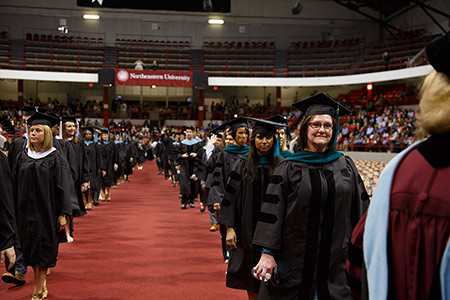
5 Tips to Get the Most out of Grad School

Is Earning a Graduate Certificate Worth It?
Did you know.
Advanced degree holders earn a salary an average 25% higher than bachelor's degree holders. (Economic Policy Institute, 2021)
Northeastern University Graduate Programs
Explore our 200+ industry-aligned graduate degree and certificate programs.
Most Popular:
Tips for taking online classes: 8 strategies for success, public health careers: what can you do with an mph, 7 international business careers that are in high demand, edd vs. phd in education: what’s the difference, 7 must-have skills for data analysts, in-demand biotechnology careers shaping our future, the benefits of online learning: 8 advantages of online degrees, how to write a statement of purpose for graduate school, the best of our graduate blog—right to your inbox.
Stay up to date on our latest posts and university events. Plus receive relevant career tips and grad school advice.
By providing us with your email, you agree to the terms of our Privacy Policy and Terms of Service.
Keep Reading:

The 8 Highest-Paying Master’s Degrees in 2024

How To Get a Job in Emergency Management

Join Us at Northeastern’s Virtual Graduate Open House | March 5–7, 2024

Cancer often requires more than one treatment − an oncologist explains why some patients like Kate Middleton receive both chemotherapy and surgery
Professor of Obstetrics, Gynecology and Reproductive Sciences, University of Pittsburgh
Disclosure statement
Alexander Olawaiye does not work for, consult, own shares in or receive funding from any company or organisation that would benefit from this article, and has disclosed no relevant affiliations beyond their academic appointment.
University of Pittsburgh provides funding as a member of The Conversation US.
View all partners
When Kate Middleton, the princess of Wales, announced in March 2024 that she was receiving “preventive chemotherapy” following abdominal surgery, many wondered what that entails. Formally known as adjuvant therapy, administering chemotherapy or other treatments after surgery is a common approach to treating certain types of cancer and is not necessarily intended to prevent cancer.
Oncologist Alexander Olawaiye of the University of Pittsburgh explains what factors doctors take into account when devising a cancer treatment plan.
Why are some cancers treated with surgery but not others?
There are many types of cancer treatment , including surgery, chemotherapy, radiotherapy, immunotherapy and hormonal therapy, among others. Sometimes doctors combine multiple types of treatment. Which is the best treatment approach depends on which organ the tumor originated from and how much the tumor has spread at the time of diagnosis.
Broadly speaking, there are two types of cancers : solid tumors – or visible tumors that can be seen by the naked eye or through imaging – and liquid tumors, such as blood cancers. The primary treatment for solid cancers is surgery to physically remove the tumor, with the goal of getting rid of all tissues involved with the tumor.
For example, in ovarian cancer , surgery often includes removing the ovaries, fallopian tubes and the uterus, along with any visible cancer tissue in the rest of the belly. Sometimes this requires removing the spleen or part of the small intestine or liver.

For skin cancers such as melanoma , surgery involves removing both the tumor and a good margin of normal-looking skin with it to capture any remaining cancer cells that may not be visible in the surrounding healthy skin. Likewise, a surgeon may also remove nearby lymph nodes.
When solid cancer is diagnosed early, the success of treatment following surgery is typically high. For example, an estimated 91% of cervical cancer patients who are diagnosed early are still alive at least five years after diagnosis. Endometrial cancer patients who are diagnosed early have an estimated five-year survival rate of 95% .
Why do some cancers recur?
Despite surgical removal, many tumors come back. Researchers don’t fully understand why cancers recur, but there are certain red flags that indicate the potential for recurrence.
One is how different the cancer cells look compared with healthy cells. The more different, the more aggressive the tumor. When a tumor is more aggressive, it’s more likely to invade neighboring tissues and spread to other parts of the body.
Another is the extent the cancer has spread at the time of diagnosis. This is what determines the stage of the cancer. For example, stage 1 cancer refers to a tumor that is confined to the organ it originally developed from. Stage 4 cancer refers to a tumor that has spread far from its origins to grow on other organs. The higher the stage, the higher the risk for a worse outcome.
A third factor is the organ where the cancer first originated. For instance, pancreatic cancers tend to be fatal even when diagnosed early because these tumors don’t respond well to therapy. Ovarian cancer can have symptoms that are difficult to recognize , leading to late diagnoses. On the other hand, breast cancer and thyroid cancer tend to be less aggressive for longer periods of time, even when diagnosed at an advanced stage.
What is adjuvant and neoadjuvant therapy?
For patients with tumors that can be surgically removed, they often also receive chemotherapy or radiotherapy before or after the procedure . Doctors prescribe this additional, or adjuvant, treatment depending on the patient’s risk of recurrence.
Recurrence typically happens when cancer cells escape from the tumor prior to or during surgical removal. Adjuvant chemotherapy or radiation after the procedure is aimed at killing these cells so they don’t settle down and grow somewhere else in the body later on.
In some cases, surgical removal is not feasible or not advisable. This could be because the cancer has spread so much that completely cutting it out is impossible or the risk of complications or disability from the surgery is high.
For example, primary surgery often isn’t a good option for ovarian cancer, since most patients are diagnosed in advanced stages; complete surgical removal, even if possible, may involve removing important organs such as the rectum and colon. This can lead to the need for a colostomy or ileostomy, where stool is passed directly from the large or small intestine to a bag outside the belly. Surgical removal of breast cancer may mean losing the affected breast.

The risk of unwanted side effects from surgical removal can be reduced through neoadjuvant therapy, or administering chemotherapy or radiation before the procedure to shrink the tumor and reduce the amount of surgery required. Studies have shown that neoadjuvant therapy can help ovarian cancer patients avoid colostomies after surgery and allow breast cancer patients to opt for a procedure that conserves their breast.
Neoadjuvant or adjuvant treatment can include chemotherapy, immunotherapy, hormonal therapy, radiation therapy or a combination of these treatments. Further advances in research will offer doctors and patients even more approaches to effectively treat cancer.
- Chemotherapy
- Cancer treatment
- Cancer diagnosis
- Cancer recurrence
- Combination therapy

Project Officer, Student Volunteer Program

Audience Development Coordinator (fixed-term maternity cover)

Lecturer (Hindi-Urdu)

Director, Defence and Security

Opportunities with the new CIEHF
Samantha the owl dies after 32 years at the U of M Raptor Center

A popular great horned owl died last month, after three decades of representing The Raptor Center at the University of Minnesota.
Samantha was an ambassador bird who ventured into the community with human handlers to educate the public about the species.
“It’s such an incredible loss of the amazing bird and educator,” said Dr. Victoria Hall, executive director of the Raptor Center. “At the same time, and when you think about her, and the legacy that she left and the number of people she impacted, it’s pretty amazing as well.”
The obituary announcement on the center’s various social media accounts said simply, “The number of programs she participated in and the people she reached are incalculable. Her impact on visitors, volunteers and staff alike was vast and deep.”
Create a More Connected Minnesota
MPR News is your trusted resource for the news you need. With your support, MPR News brings accessible, courageous journalism and authentic conversation to everyone - free of paywalls and barriers. Your gift makes a difference.

The post also prompted comments by people who met Samantha at schools and summer camps.
“I remember when she came to my school in kindergarten!” wrote one follower on Instagram , with an owl emoji. “It was so cool to see an owl so close up, and she definitely helped spark my joy of birds. Fly high, Samantha.”
Fans also appreciated Samantha in her videos involving lots of movement.
“One thing Samantha loved were baths, whether it was a bath pan, or whether we brought in a misting hose,” Hall said.
On hot Minnesota days, “Samantha would just sit in front of it, and get soaked and everybody would really enjoy watching just how much fun she was having."
She’d fluff her feathers and extend her wings.
“She would look a little bit funny, not that she cared at all,” Hall added.
Mostly, though, the great horned owl had presence.
“Samantha just had an incredible amount of dignity and poise to her. She would certainly make some subtle hoots at you if she agreed or disagreed with things,” Hall said. “She held herself in her 30-plus years as one of the most seasoned birds that we had.”
When Samantha arrived at the center in 1992, she had multiple injuries, including a broken wing. The staff believed she had been hit by a car.

They were unable to estimate her age because she was already an adult. Hall said it’s nearly impossible to determine the age of a great horned owl after its first year of life. But she added it’s safe to say she was older than 32 years old when she died.
Samantha was nursed back to health, but she couldn’t fly due to the wing injury. The center set up a home for her because they believed her survival chances in the wild would be low if she was released.
The center staff use positive reinforcement training to engage the birds to be ambassadors.
“There is an incredible relationship between our education birds, and then their education humans that work with them,” Hall said. “We never forced one of our education birds to do anything. We asked them to.”
That’s where the positive reinforcement comes in.
Samantha became an ambassador bird one year after she arrived, Hall said.
In recent years, she said Samantha suffered from a number of age-related conditions that were treated. But her pain got worse and the choice was made to euthanize her.
Samantha lived about 10 years longer than the average lifespan of her counterparts in the wild.

- Mpls officials discuss possible next use for former 3rd Precinct site
- Minnesota veteran walks 1,000 miles to eclipse in Texas to spread hope
- Proposed bill seeks to curb copper wire theft in St. Paul
- Request info
- Majors & Degrees
- Prospective Students
- Current Undergraduate Students
- Current Graduate Students
- Online Students
- Alumni and Friends
- Faculty and Staff
USM Center for Writers Hosting Writing Camp: Young Authors Academy in July
Mon, 04/08/2024 - 11:55am | By: Ivonne Kawas
The Center for Writers at The University of Southern Mississippi (USM), housed in the School of Humanities, will host the Young Authors Academy (YAA) — a creative writing summer camp —July 8-12 for young teens ages 9-13. The camp will be held from 1 p.m.- 5 p.m. on the Hattiesburg Campus.
YAA provides a space for campers who want to practice creative writing in a nurturing and collaborative environment. Participants gain confidence in their own writing, as they are introduced to fiction, poetry, and a process designed to diversify writing skills.
“Our goal is to offer young writers the opportunity to create many poems and stories, as well as a productive writing process that they can continue when camp is over,” said Dr. Rachael Fowler, assistant teaching professor of English. “At the YAA, they’ll find an outlet to experiment with creativity, express themselves in new ways, and support each other as they share their voices and words. We look forward to providing new writing experiences to our many returning campers and all newcomers.”
Experienced camp counselors, who are published writers in USM’s Creative Writing program, will lead participants through many activities: writing prompts, walking field trips on campus, practice reading their own work to others, and guidance for providing supportive feedback to fellow writers. This year’s interactive field trips include sites such as the Archaeology Lab, the Theatre and Dance Building, and the Gallery of Art and Design
Camp participants get to showcase the work they produce at a reception and public reading—open to family and friends—and get a printed anthology of their writing to take home.
The summer camp costs $200. Register or contact Dr. Rachael Fowler, the camp coordinator, via email.
Categories: Arts and Sciences
Recent News Articles
Usm statement regarding incident on hattiesburg campus, usm celebrates its graduate students with week of activities.
Non-Credit Certificate Program in Medical Writing and Editing
Master the fundamentals and best practices of medical writing, editing, and communication.

Upcoming Events

Freelancing in Medical Writing and Editing
Apr 9, 2024 • Online

How to Land Your First Job in Editing
Apr 29, 2024 • Online
At a Glance
The University of Chicago’s non-credit certificate in Medical Writing and Editing uses the AMA Manual of Style as the foundation for mastering the fundamentals and best practices of medical writing, editing, and communication.
Developed for professionals with backgrounds in science or writing, the online medical writing certificate program with synchronous course sessions has a comprehensive curriculum focused on creating medical communicators with strong writing, editing, data reporting, and analytic skills. Student have the opportunity to boost their skills quickly in nine months to one year, part-time.
Designed For
Designed for both professionals with a background in science who want to acquire writing skills, and those with a background in writing or an English degree who want to understand medical terminology.
Learn from Industry Experts
Our program instructors have worked with and for a wide range of leading organizations, including the American Medical Association, WebMD, the Mayo Clinic, The Journal of Infectious Diseases, and the Journal of Graduate Medical Education.

Want to Learn More?
View our comprehensive curriculum, taught by seasoned medical writers and editors.
Grow Your Network
Current students and alumni have access to networking events and webinars hosted by our Student Advisory Board and our Professional Development team, who also fund an alumni scholarship program.
Join a Thriving Field in Medical Writing
Driven by the expansion of scientific and technical products, the Bureau of Labor Statistics projects a faster growth rate in the employment of technical writers than that in other fields.
Potential Job Titles for Medical Writers and Editors
- Content Specialist
- Medical Writer/Editor
- Regulatory Writer/Editor
- Technical Editor
Average salaries for Medical Writers and Editors
According to Glassdoor, the salaries of both medical writers and editors average around $97,000.
Focus Areas
- Specialization Track in Freelancing
Offered by The University of Chicago's Professional Education
Ready to Take Your Next Step?
Of interest.
- Non-Credit Certificate Program in Regulatory Writing
Gain in-demand medical writing skills that will help elevate your career in healthcare or medical...
Inescapable Ethics

Essential Courses on Medical Copyediting

From Freelancer to Founder
- Non-Credit Certificate Program in Editing
- Learning the Business of Freelance Medical Writing and Editing

COMMENTS
Step 2: Introduce Yourself. Share your name, current education, or professional status and state the reason for your email. This introduction should be brief and concise. Step 3: Specify your Enquiry. Delineate clearly what you want to know, ask specific questions. Make your enquiries easy to understand and answer.
3) Address the recipient correctly. If you write to a non-faculty administrator, address them as "Mr. Last name" or "Ms. Last name.". If you want to be exact, you may check their profile to see if they have a Ph.D. or DA. If you are writing to a professor or instructor, use the title "Professor Last name.".
First off, your contact information is a must-have. Include your name, address, phone number, and email at the top right corner. It'll enable ease of correspondence between you and the university. Next up is the date. The American standard format is Month Day, Year (e.g., August 31, 2022).
Our top tips for writing an academic email include the following: Consider whether you need to send an email. You may be able to find the information in your syllabus, timetable, or other course materials. Write a clear subject line setting out what your email is about. Let the recipient know who you are and make a specific request.
Greet the individual. Always start an email with an appropriate and respectful salutation. Double check their name and title before sending an email and ensure that your greeting is followed by a comma. Introduce yourself. Academic staff have a large cohort of students and so it is important to inform them of your year and course of study.
Structure. Your professional emails should also be well structured, with an opening and a closing bracketing the body of the message. In particular, you should begin your emails with "Dear" rather than "Hi" or a similar informal greeting. Polite closing remarks may include "Sincerely," "Thank you," "Best wishes," and "Best ...
End your message with a professional closing like "Sincerely," "Best," or "Thank you" followed by your first and last name. If you are writing about an administrative issue, include your Mason G-number. Sincerely, Miranda Castanga. G00001111. Email you send to faculty and administrators should follow the conventions of professional ...
Most instructors find it helpful to include the course number in the email, as well as a one or two word description of the reason why you are writing. Salutation: You should use a formal name or title in a salutation, such as Dr., Mr./Ms./Mrs., or Professor as appropriate. Body: Keep the body of an email concise and to the point.
How to Write a Formal Email Tips on how to write a formal email with examples. In the information age, email has become the dominant form of communication. Being able to write a polished, professional email is now a critical skill both in college and the workplace. Below are some key distinctions between formal and informal writing, as well as some
Here are seven tips to keep your emails on point: 1. Keep the format clean. A solid college email should start with a formal greeting, preferably with the recipient's name and title, and end with a sincere send-off. Keep the font size and color legible while avoiding frequent use of emojis, formatting, or images.
If you are starting an email conversation with a university, use the formal features of letter writing, not academic writing. Have a formal greeting. Use complete sentences, but don't make them as long and complex as academic sentences. Group your sentences into clearly organized paragraphs. At the end of the email, use a formal sign-off word ...
Subject Line: Your subject line should be concise and attention-grabbing. Use keywords such as "University Admission Inquiry" or "Application for [Program Name]" to make it clear and relevant. 2. Salutation: Address the recipient by their proper title and name. If you are unsure about the recipient's gender, use a neutral salutation ...
4. I hope you …. Simply wishing the recipient well is a good way to start an email in a friendly way. Rather than the generic " Hope you're doing well " or the slightly stiff " I hope this email finds you well ," try a more specific phrasing to emphasize the sincerity of your wishes. Examples: Wishing them well.
How to send email to a university. Flowrite is an AI email writer that turns short instructions into ready-to-send emails and messages across your browser. Our smart template uses artificial intelligence to adapt to the situation and generate unique emails and messages, taking into account the recipient and previous message: Try it yourself.
How To Find Who To Contact In The Admissions Office. To find a college admissions officer's name and email address, you can follow these steps: Visit the College Website: Start by visiting the college's official website. Look for the "Admissions" or "Contact Us" section. Admissions officer contact information is often listed on ...
The body of your college admissions email should contain an introduction, questions about the program, contact information, and a statement of gratitude. Introduction. Your college admissions email should include an introduction and a paragraph about your current academic status. State your name, and describe your current year or when you plan ...
Learn how to write a formal email including format, structure, greetings, body, and sign-offs with the help of our formal email examples and template. x. ... I'm a third-year student at the University of Oxford. I'm contacting you to request access to your online series of tutorials. I'm fascinated to listen and learn from you and believe these ...
2. Click on "Compose" or "New." Before you can write an email, you will need to open a new, blank message box to write your email in. The exact method varies depending on the service you use, but there will usually be a button toward the top of the page with a label like "Compose," "New," or "New Message.".
Step 2: Draft an email template. Professors get a lot of emails and there is a good chance that they have received countless messages already from high school students asking to work in their labs. If you want them to read your email, you need to show that you have not sent a mass internship cold email.
1. How to write an excuse email to professor example. Dear Professor (name), My name is (your name), and I'm in your (insert details) class. First, I would like to apologize personally and explain why I have been unable to (insert what you need an excuse for). II would like to reassure you that this won't happen again.
How to email MBA admissions staff: Email etiquette best practices. In this article, we offer four keys to emailing MBA admission staff that will make a positive impression and make your emails more likely to receive a response. 1. Use the subject line strategically. It can be tempting to breeze past the subject line altogether, or hastily add a ...
Writing your research papers is undeniably one of the hardest parts of research life. From coming up with the most relevant title to listing down proper citations, you'll need a good grasp of ...
Sample College Essay 2 with Feedback. This content is licensed by Khan Academy and is available for free at www.khanacademy.org. College essays are an important part of your college application and give you the chance to show colleges and universities your personality. This guide will give you tips on how to write an effective college essay.
3. Understand the timeline. Although the application process varies by college or university, the vast majority will require you to submit your transcript, letters of recommendation, professional resumé, and statement of purpose.Your transcript alone could take weeks to be delivered and processed, so don't wait until the last minute to start applying.
Disclosure statement. Alexander Olawaiye does not work for, consult, own shares in or receive funding from any company or organization that would benefit from this article, and has disclosed no ...
The eclipse will start around 1 p.m. Central Time, peak around 2 p.m. and end by 3:10 to 3:15 p.m. Find the exact timing of the eclipse in your area on eclipse2024.org. Visibility is expected to ...
Samantha the great horned owl was the University of Minnesota's Raptor Center's longest-term ambassador. The bird lived about 10 years longer than the average lifespan of her counterparts in the wild.
Disa Cornish is an Associate Professor in the Public Health program at the University of Northern Iowa. She teaches at the undergraduate and graduate levels and her research has focused on public health program evaluation, maternal and child health, and applied data collection methodologies and survey design.
The Center for Writers at The University of Southern Mississippi (USM), housed in the School of Humanities, will host the Young Authors Academy (YAA) — a creative writing summer camp —July 8-12 for young teens ages 9-13. The camp will be held from 1 p.m.- 5 p.m. on the Hattiesburg Campus.
The University of Chicago's non-credit certificate in Medical Writing and Editing uses the. AMA Manual of Style. as the foundation for mastering the fundamentals and best practices of medical writing, editing, and communication. Developed for professionals with backgrounds in science or writing, the online medical writing certificate program ...